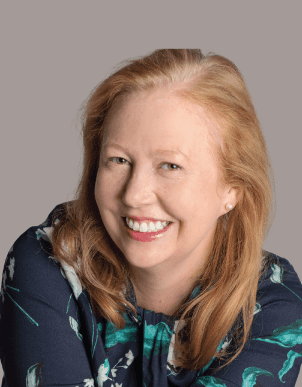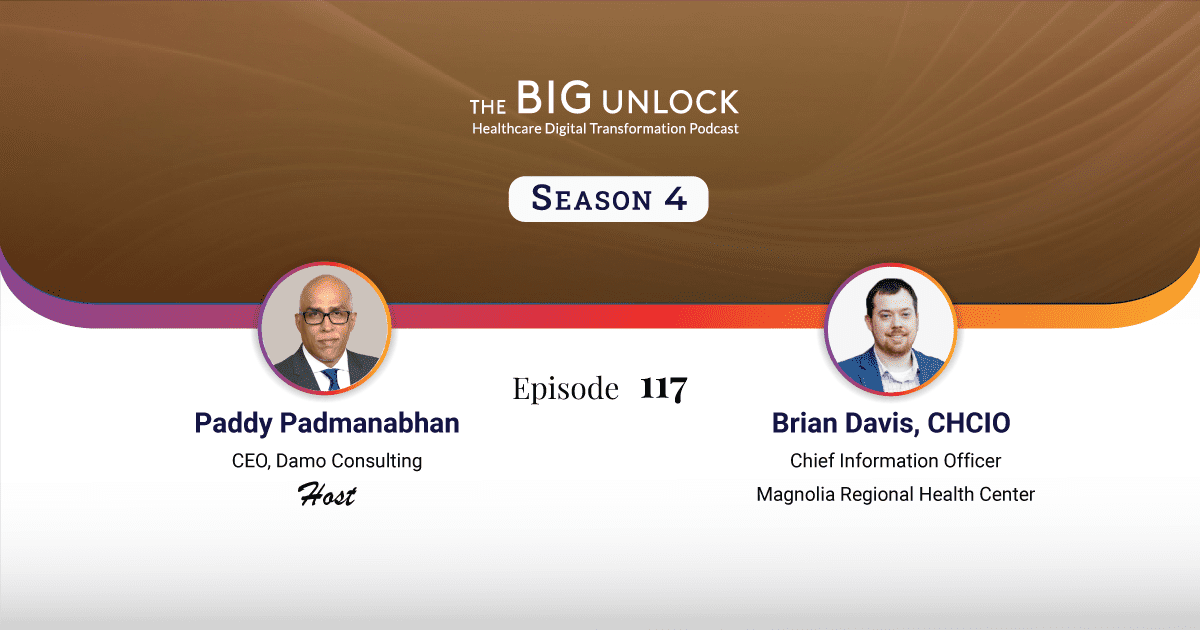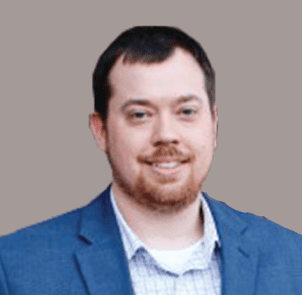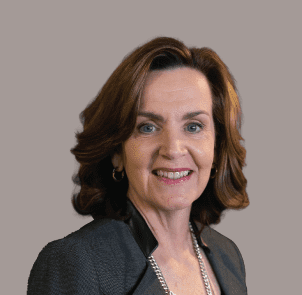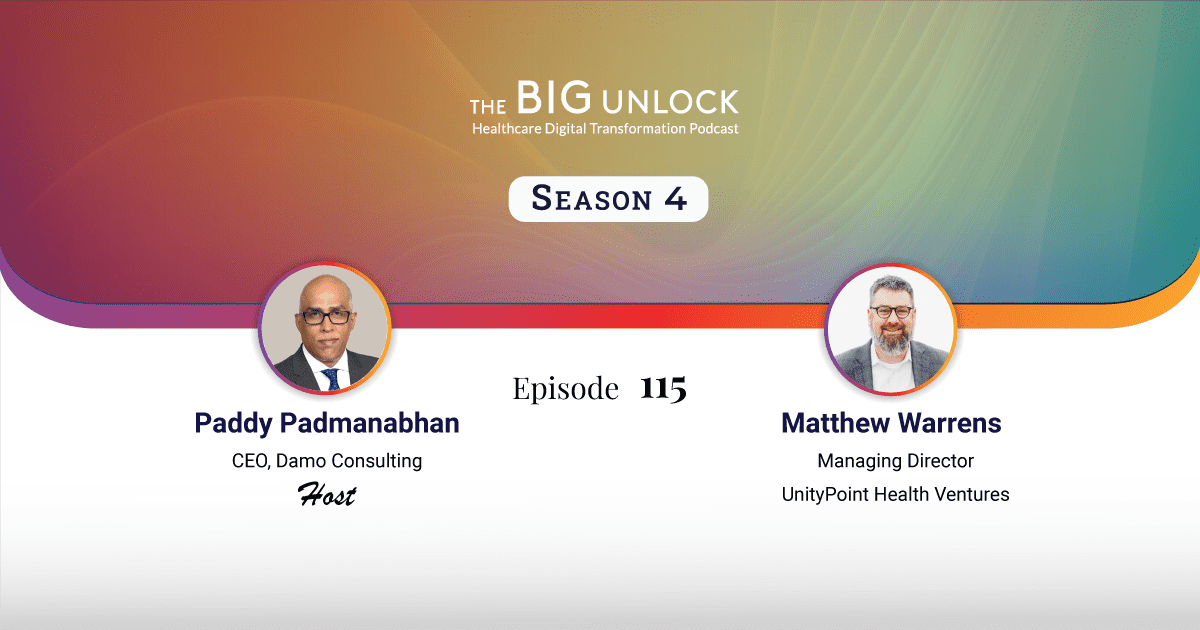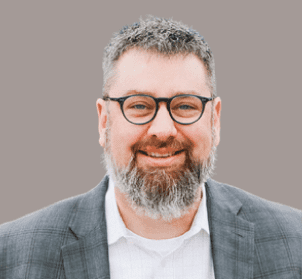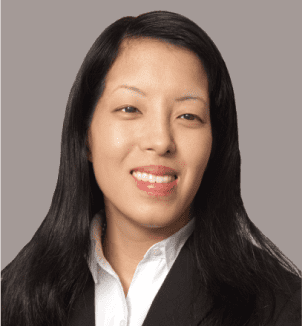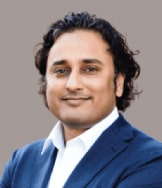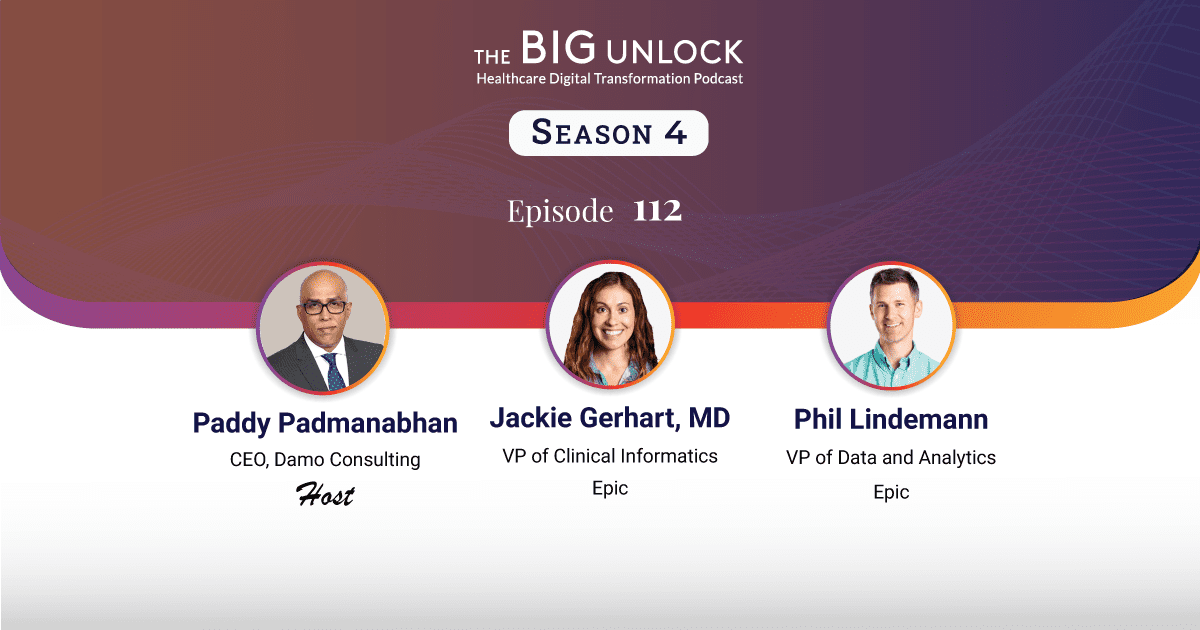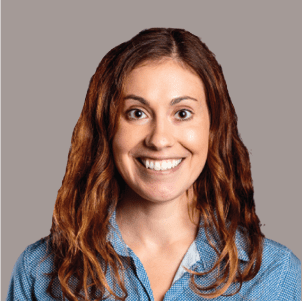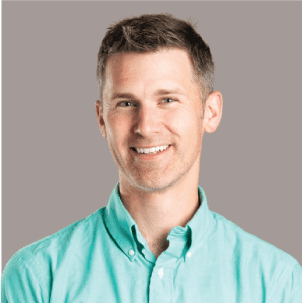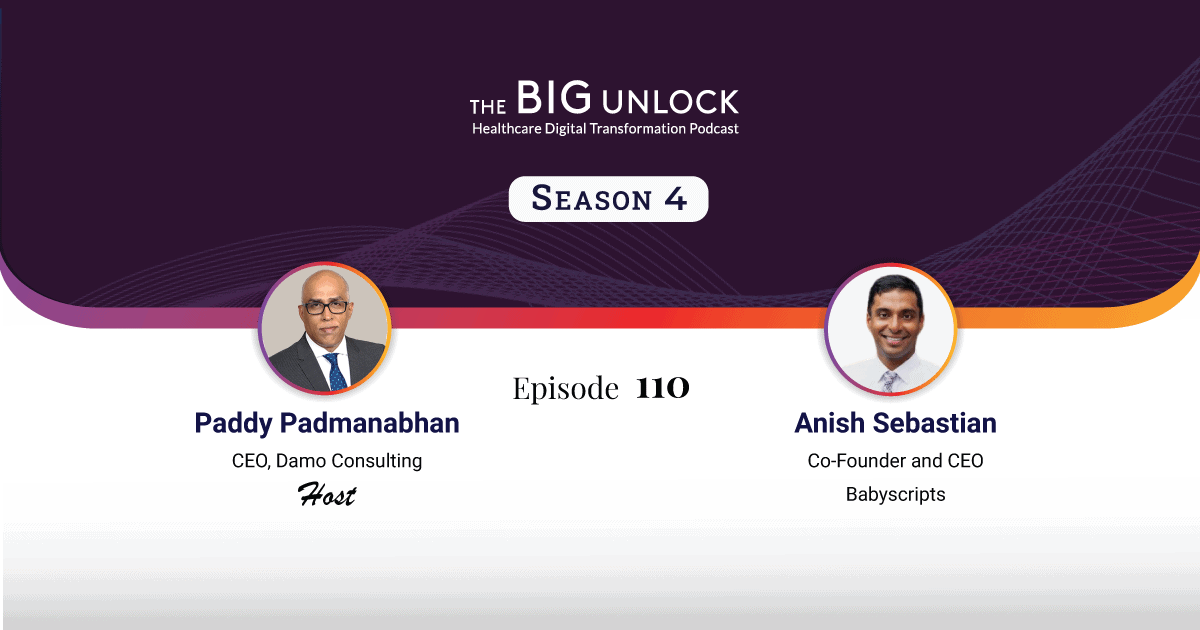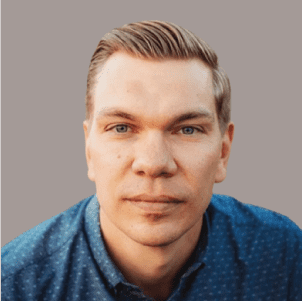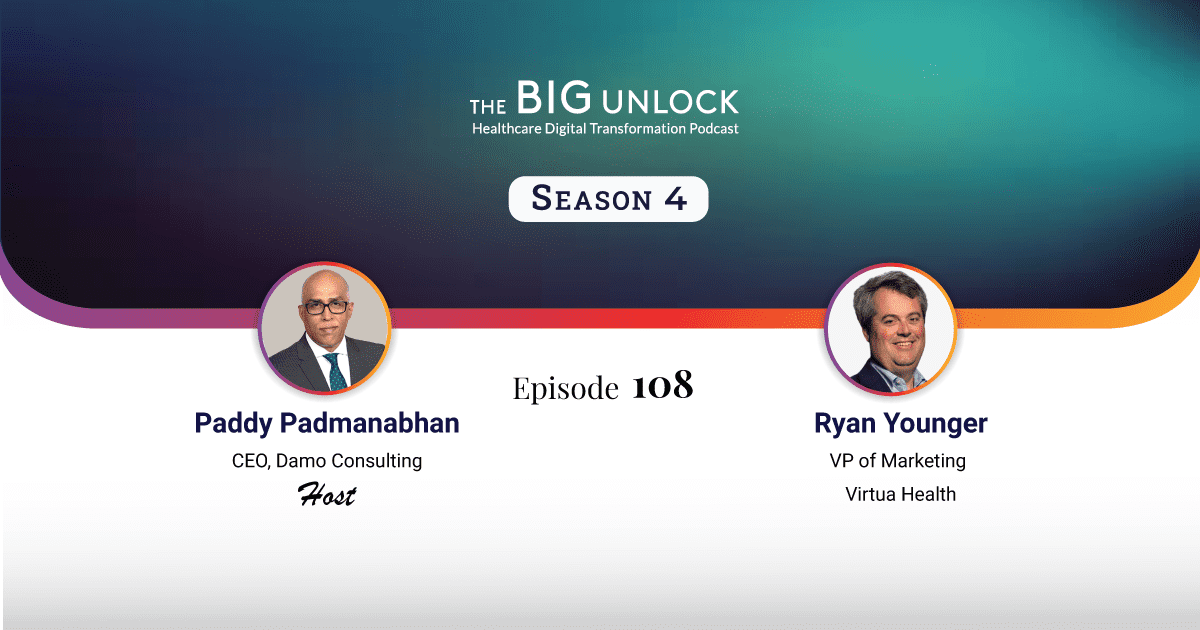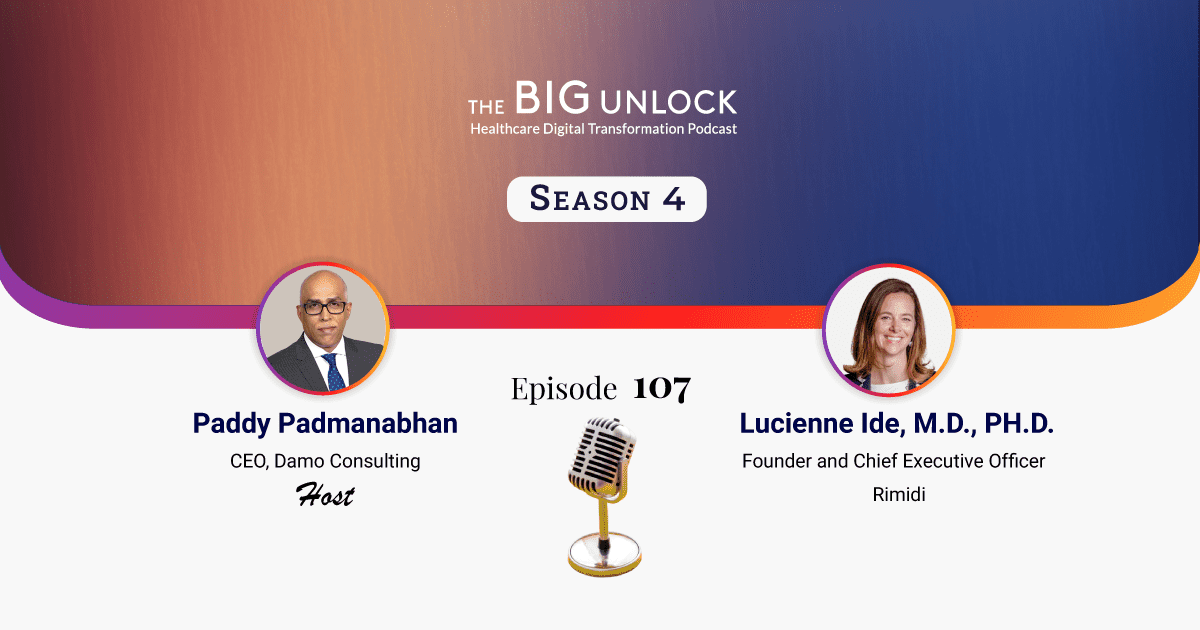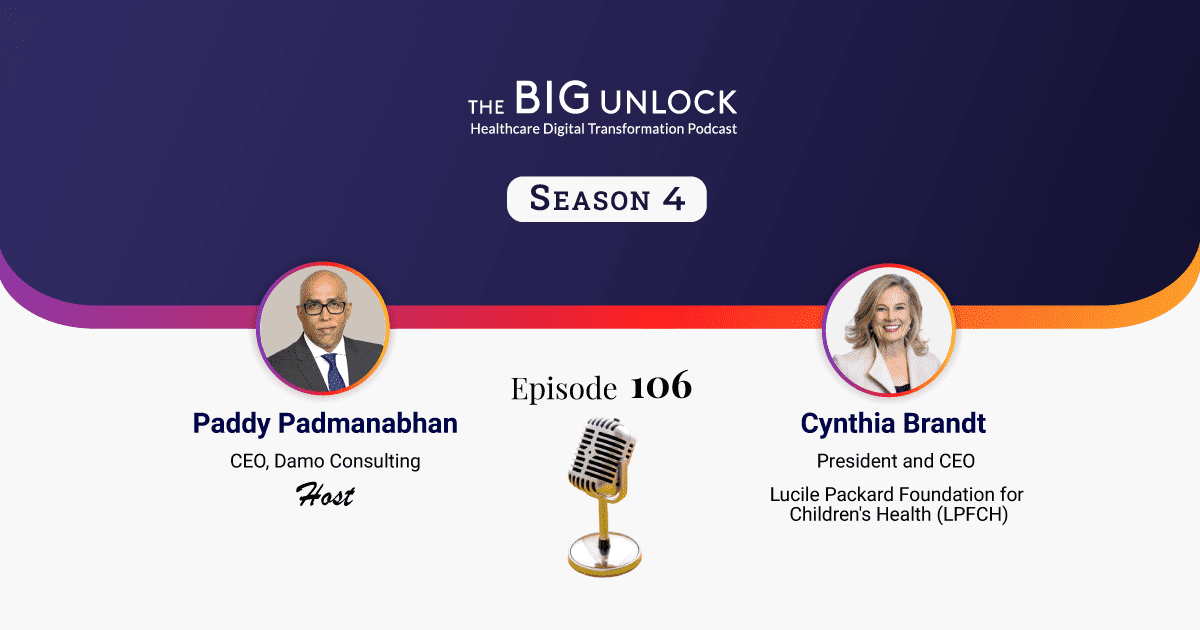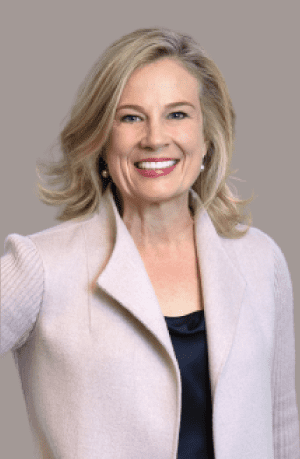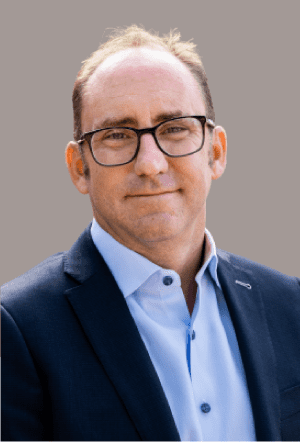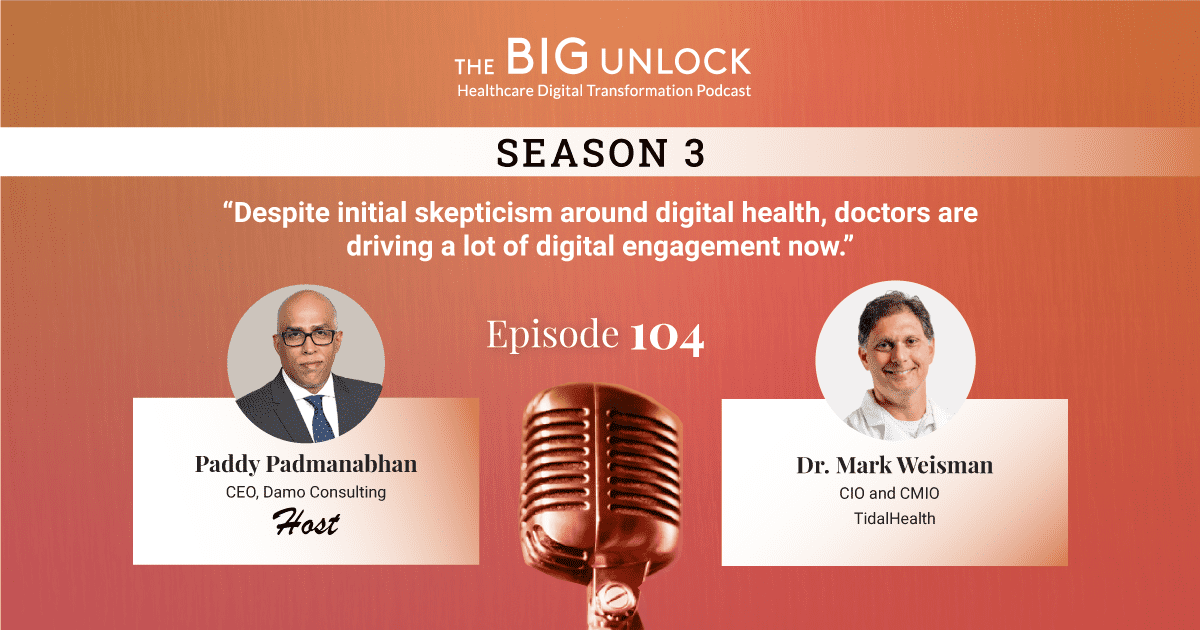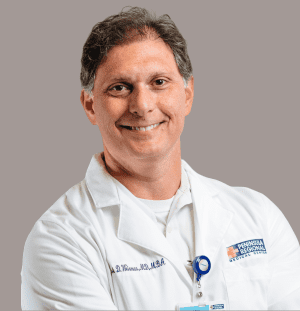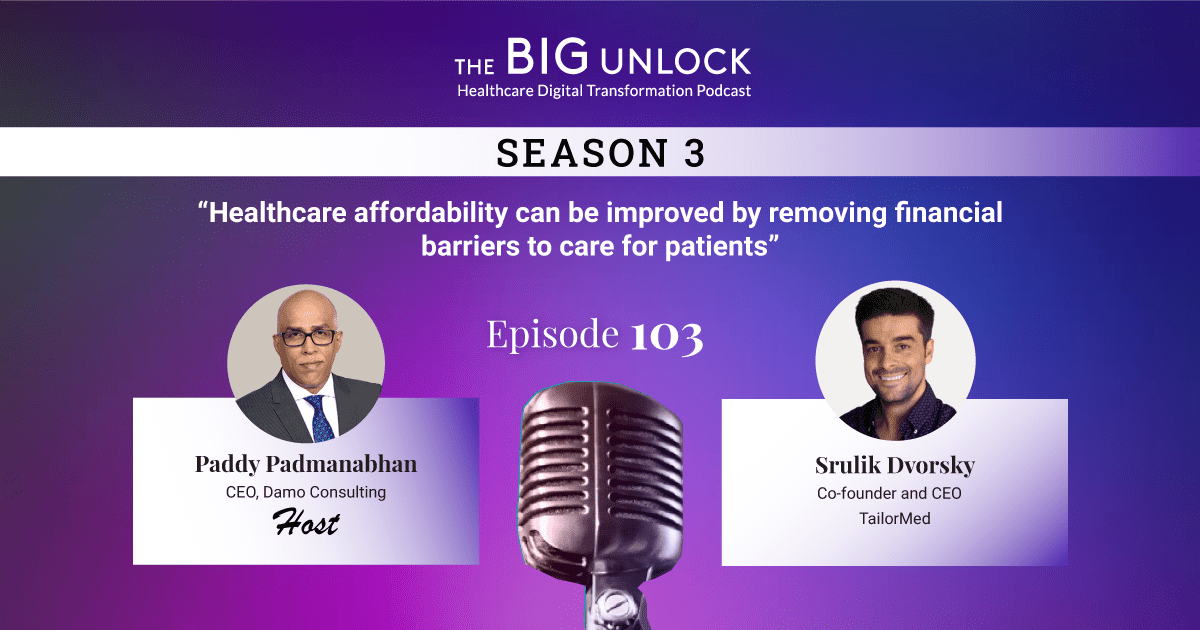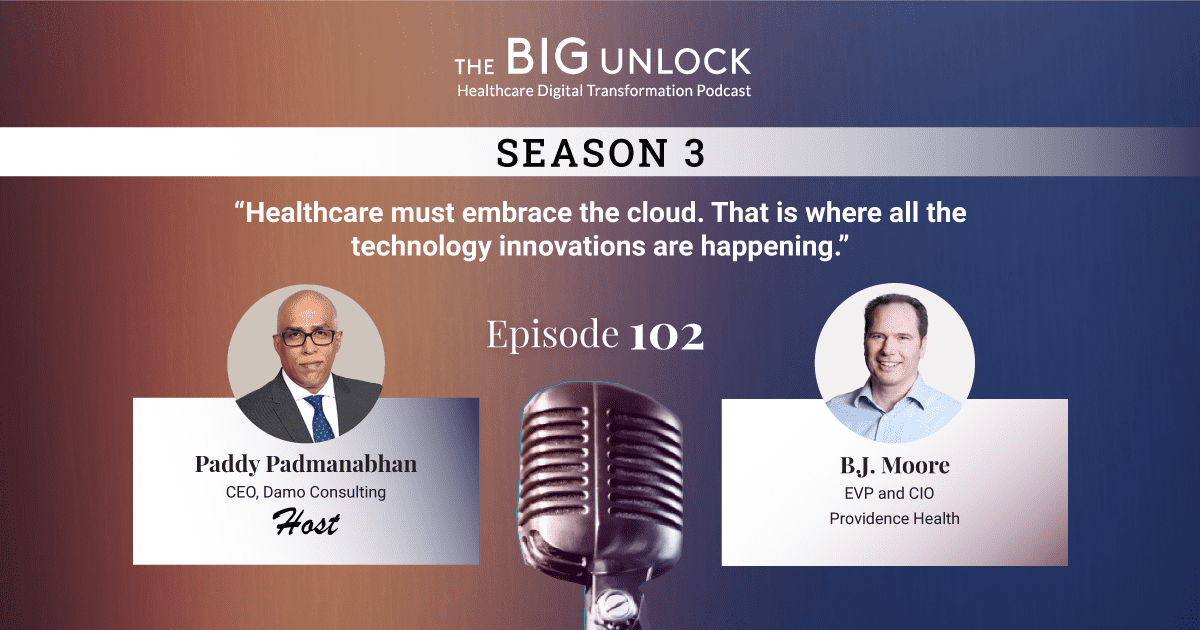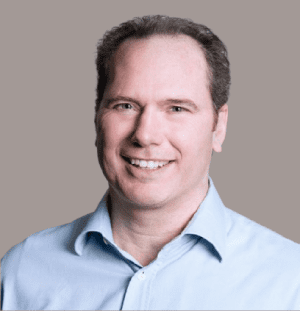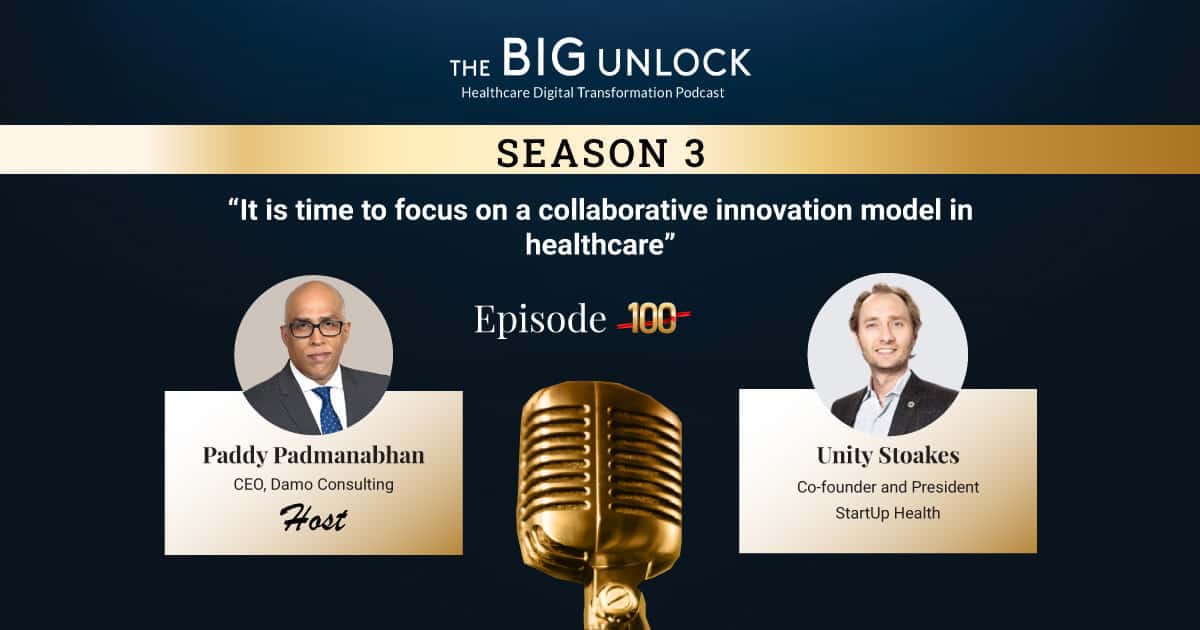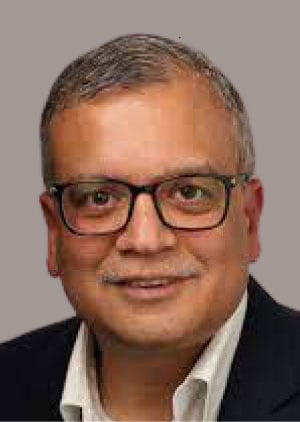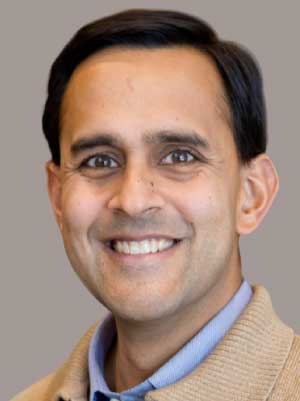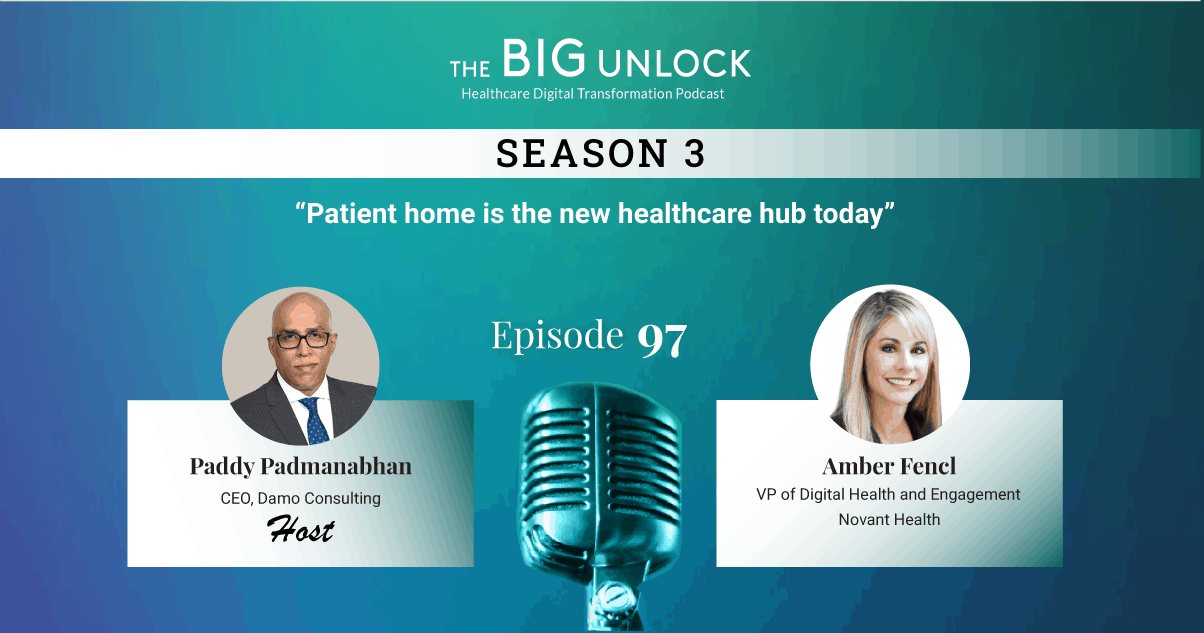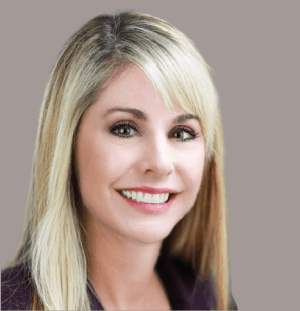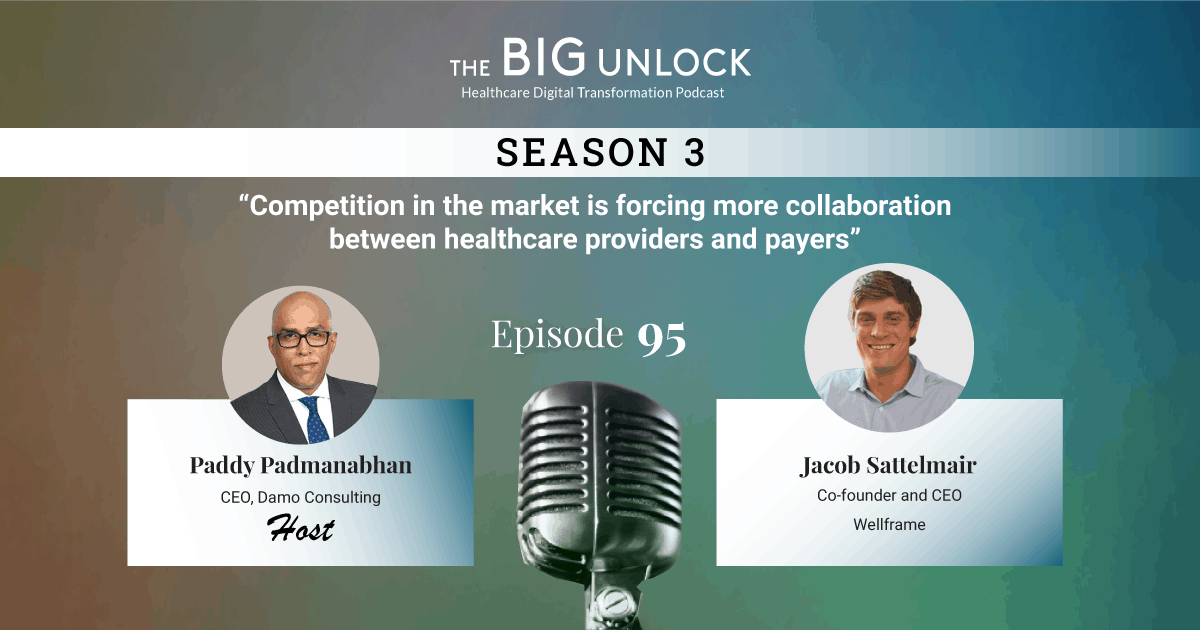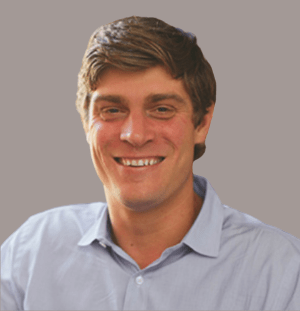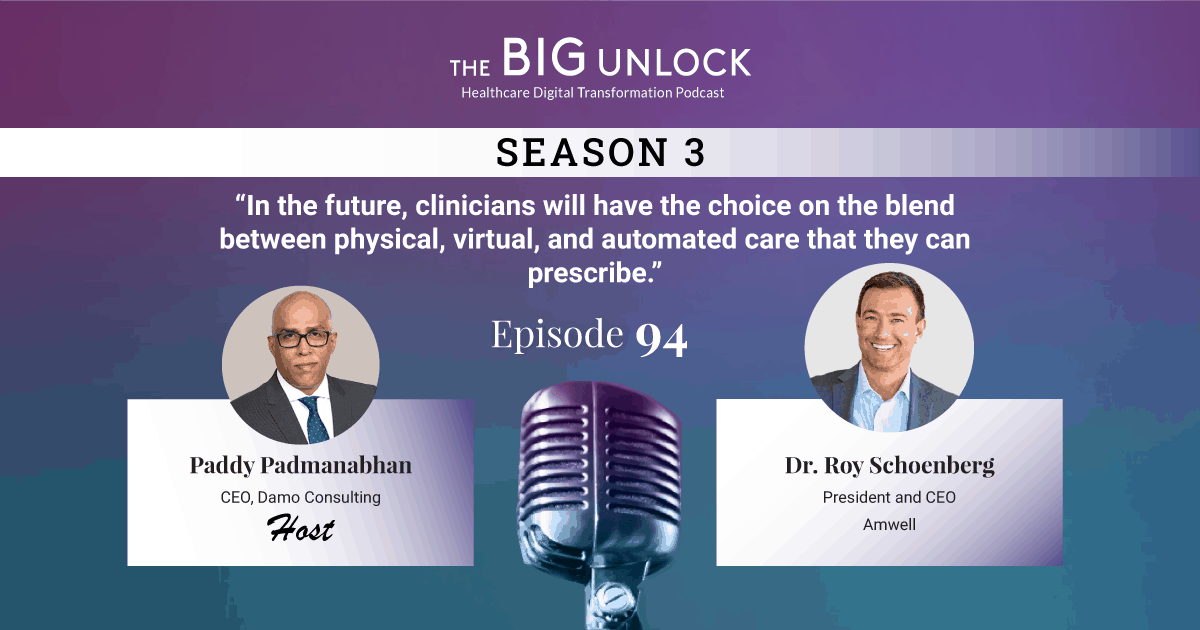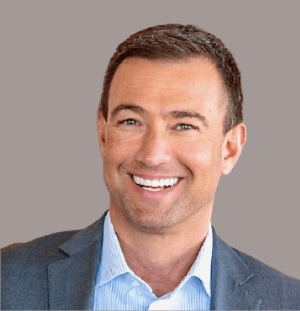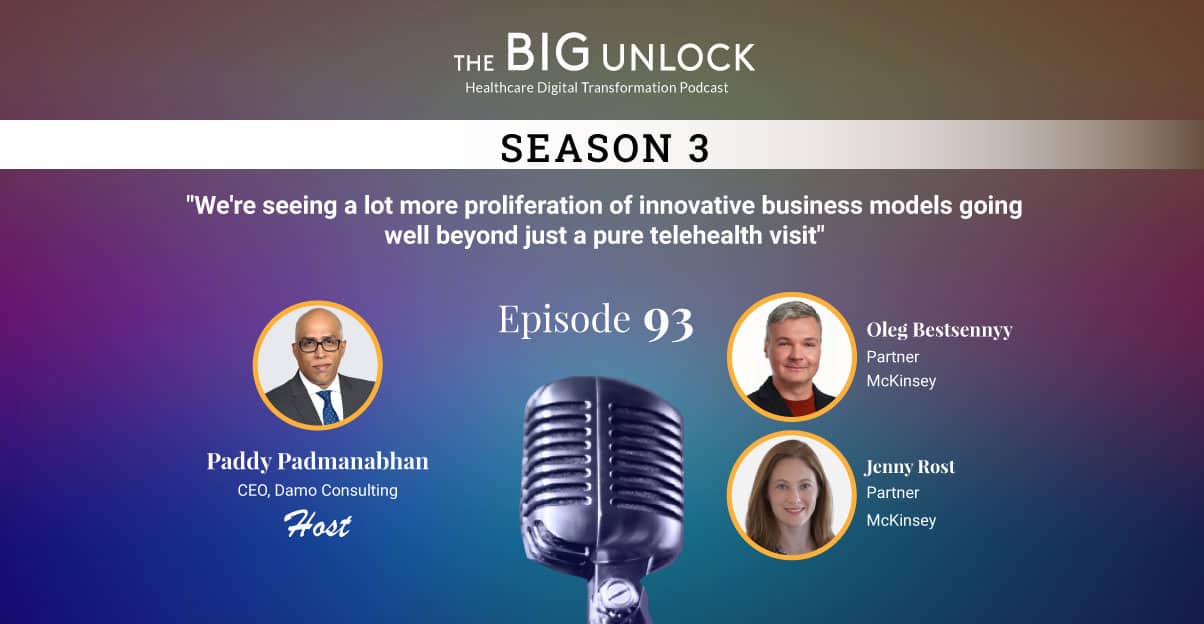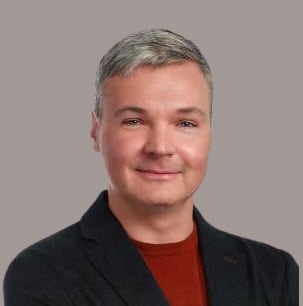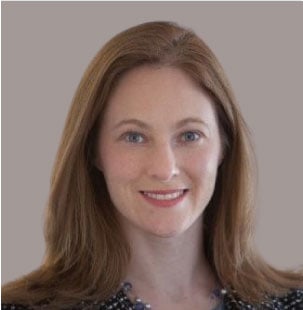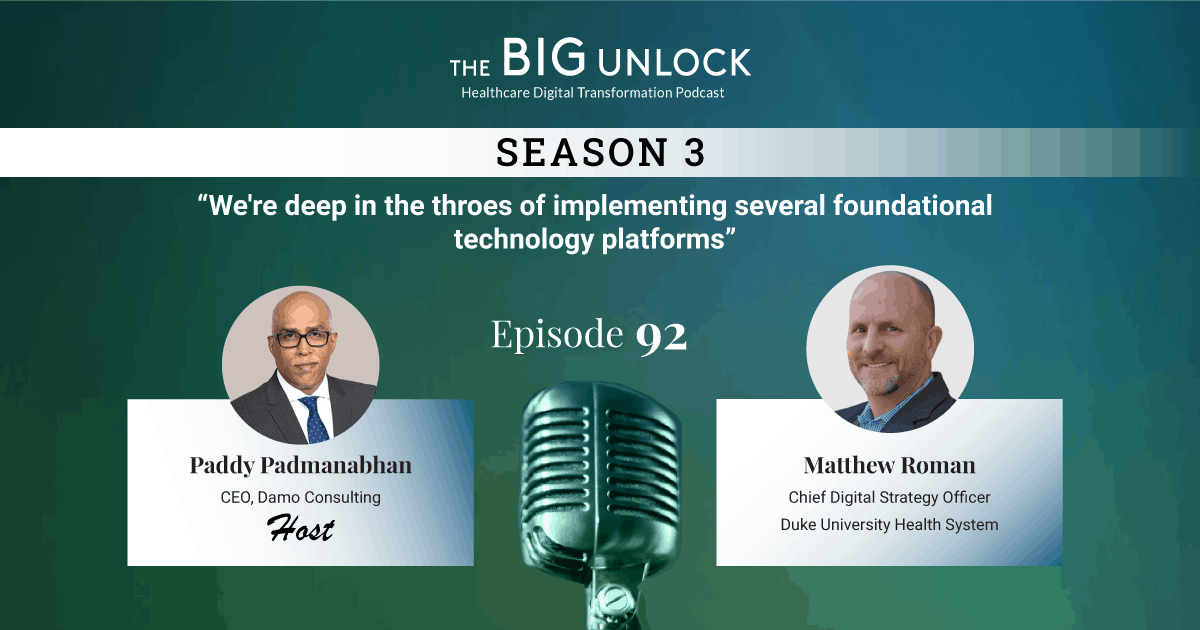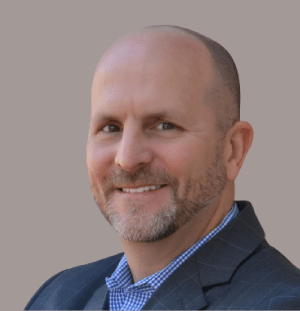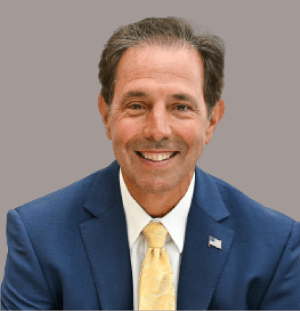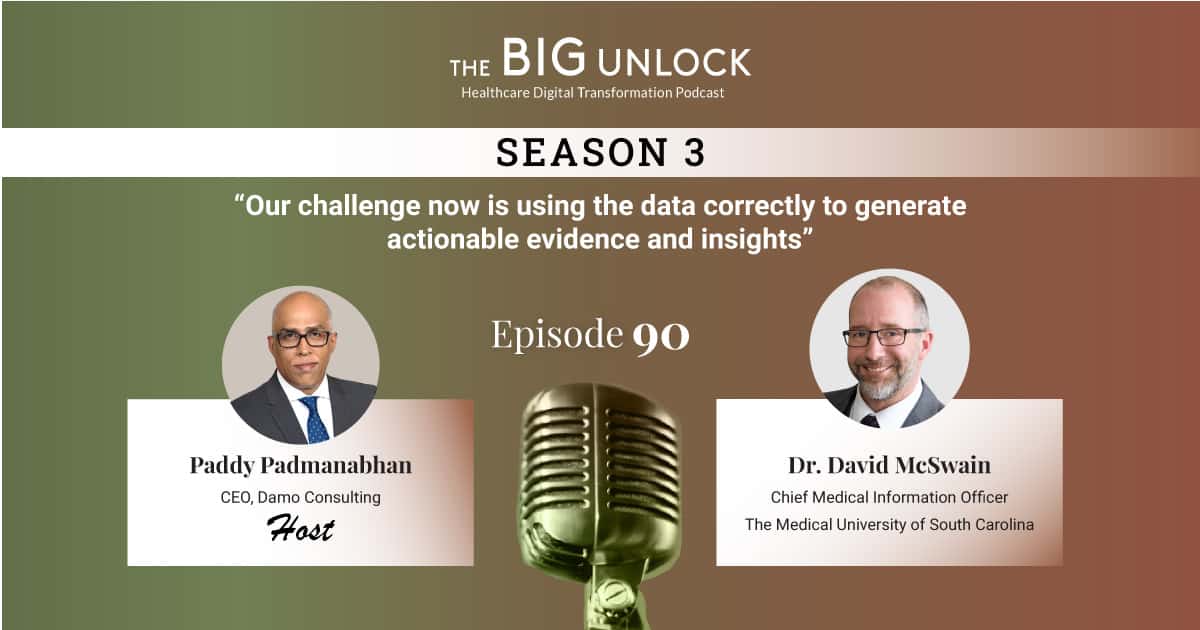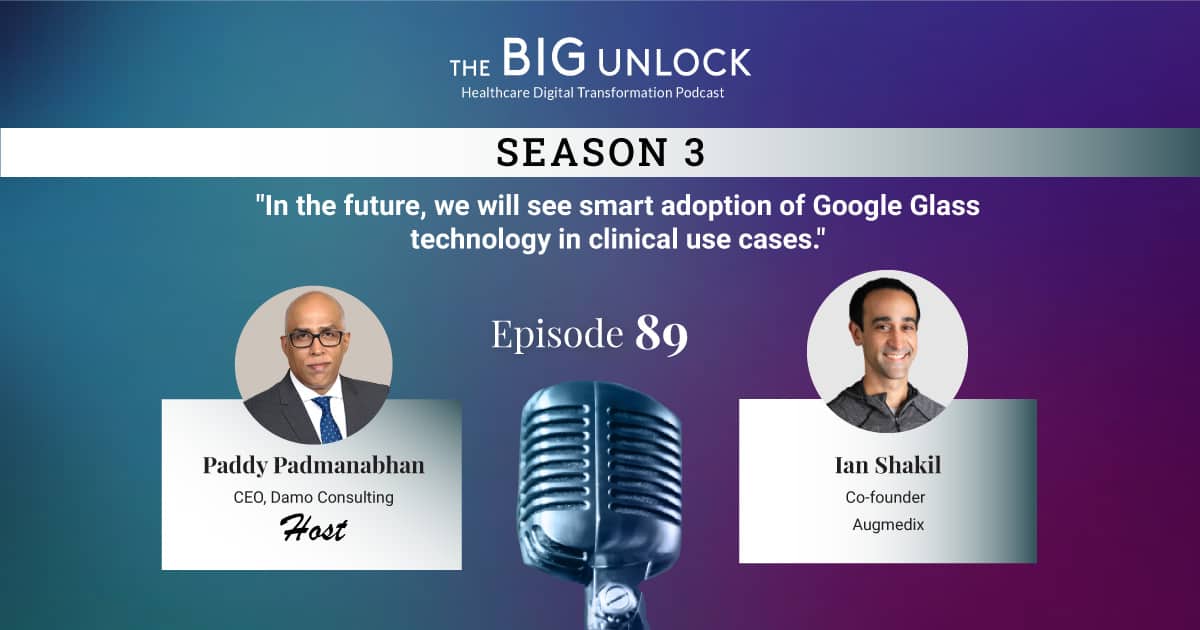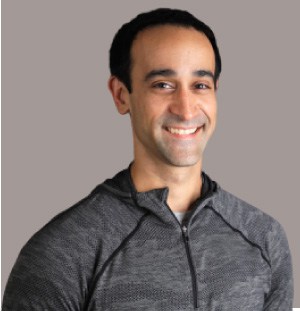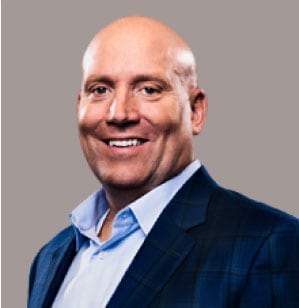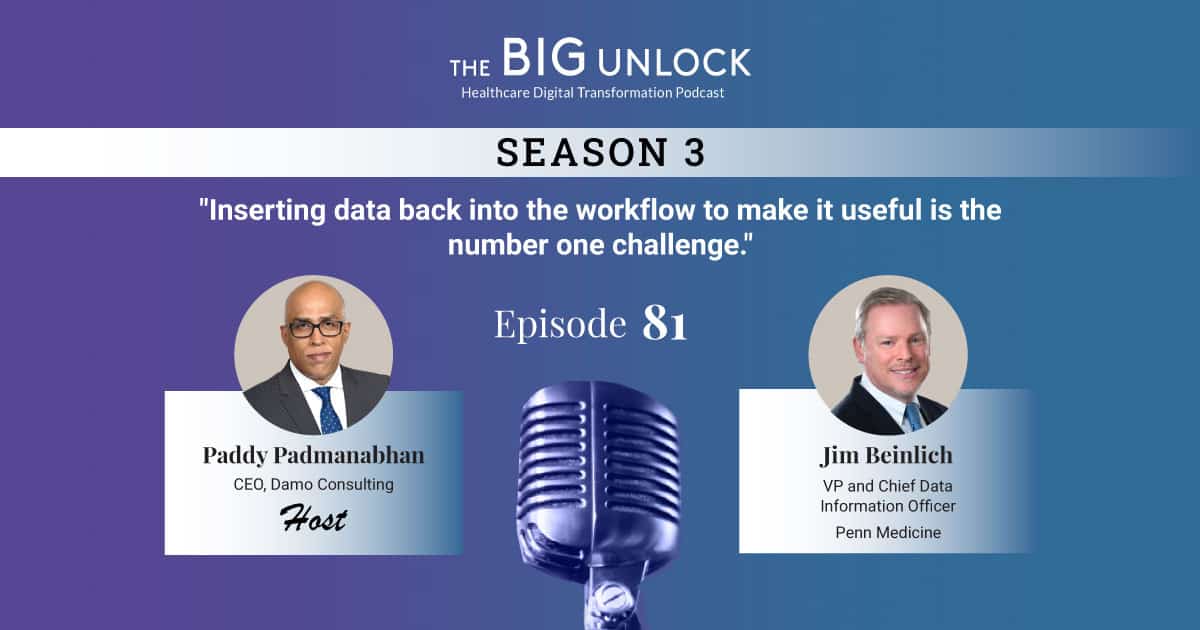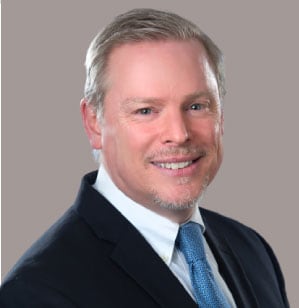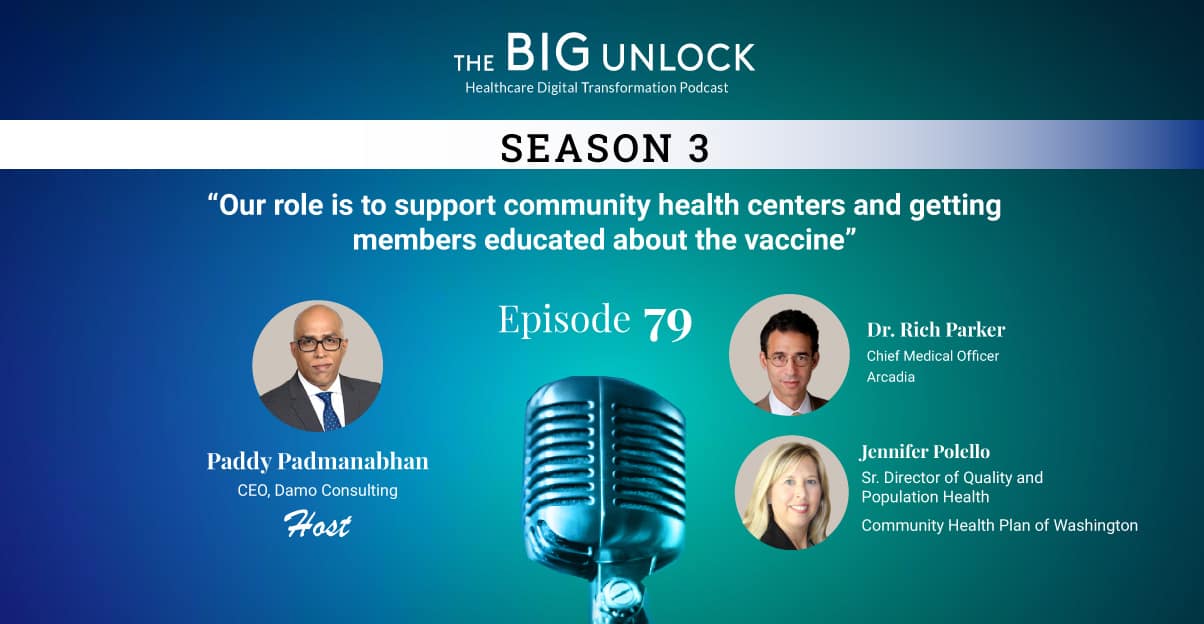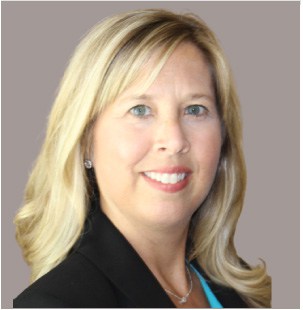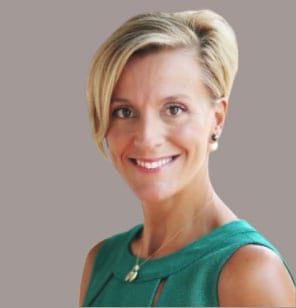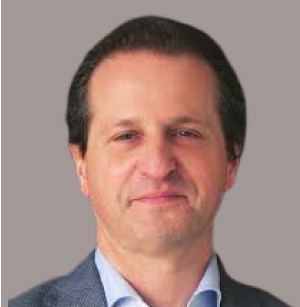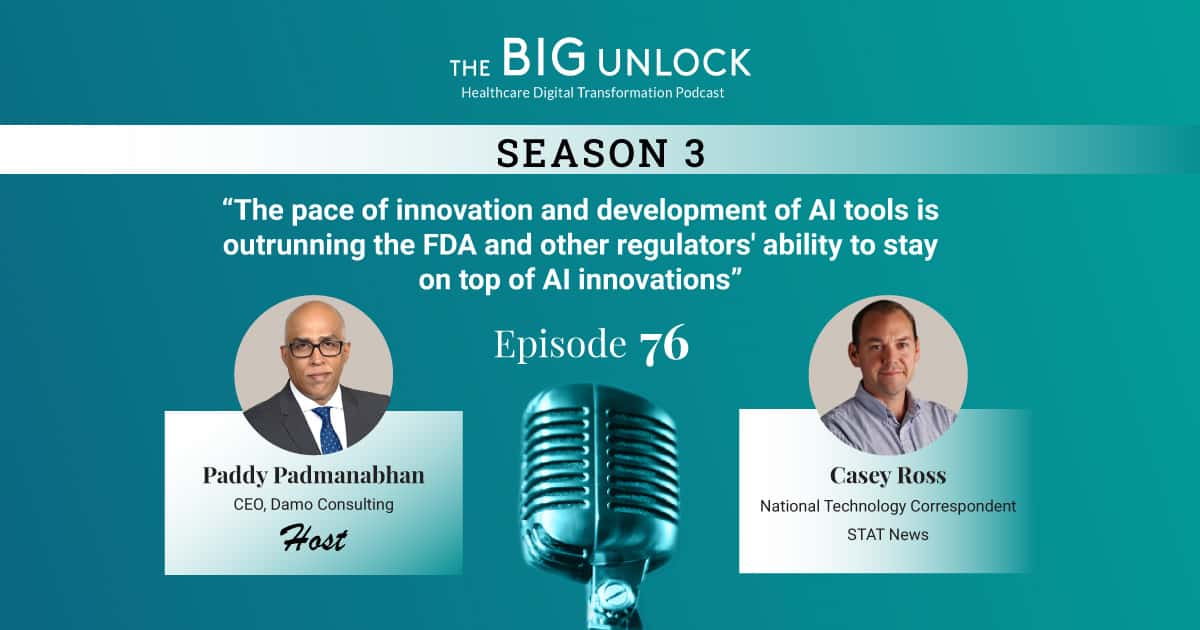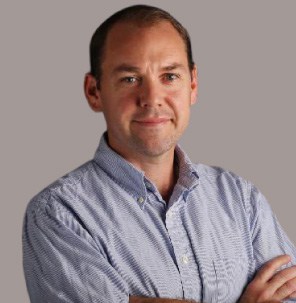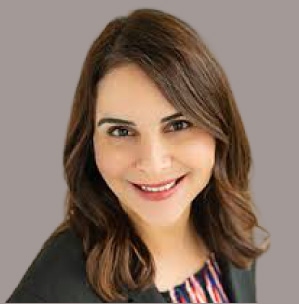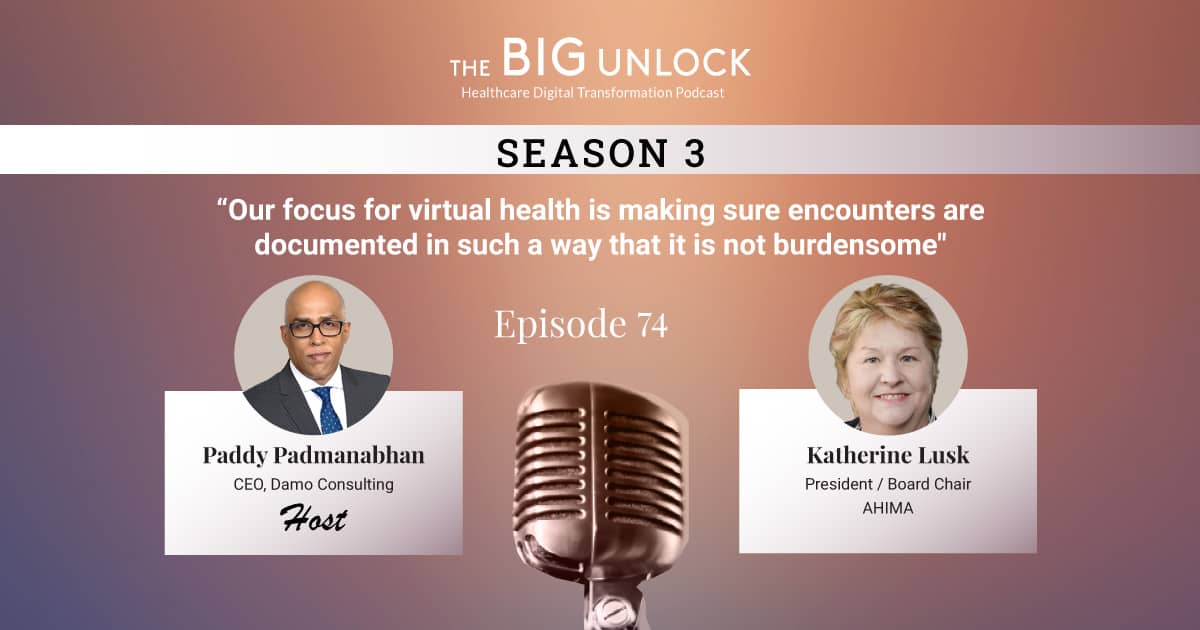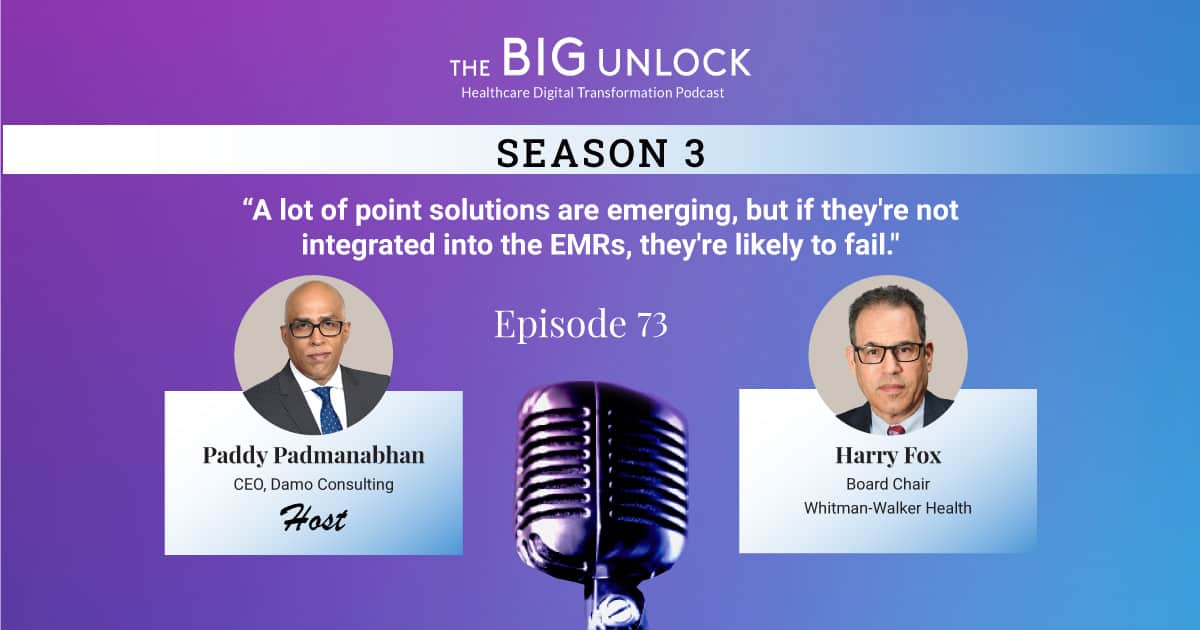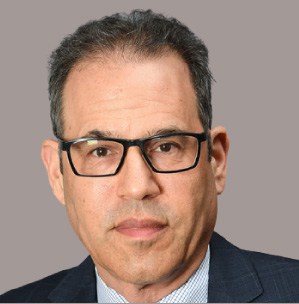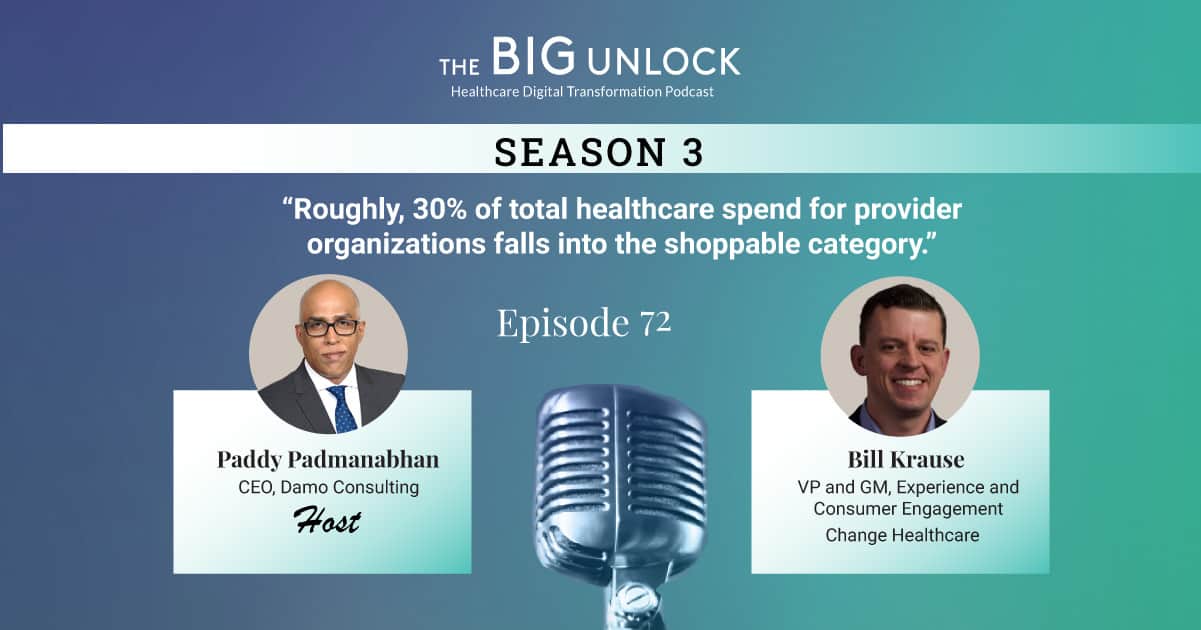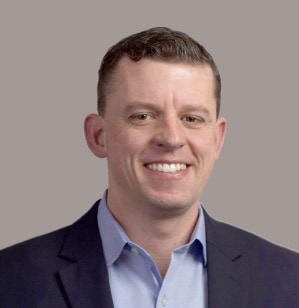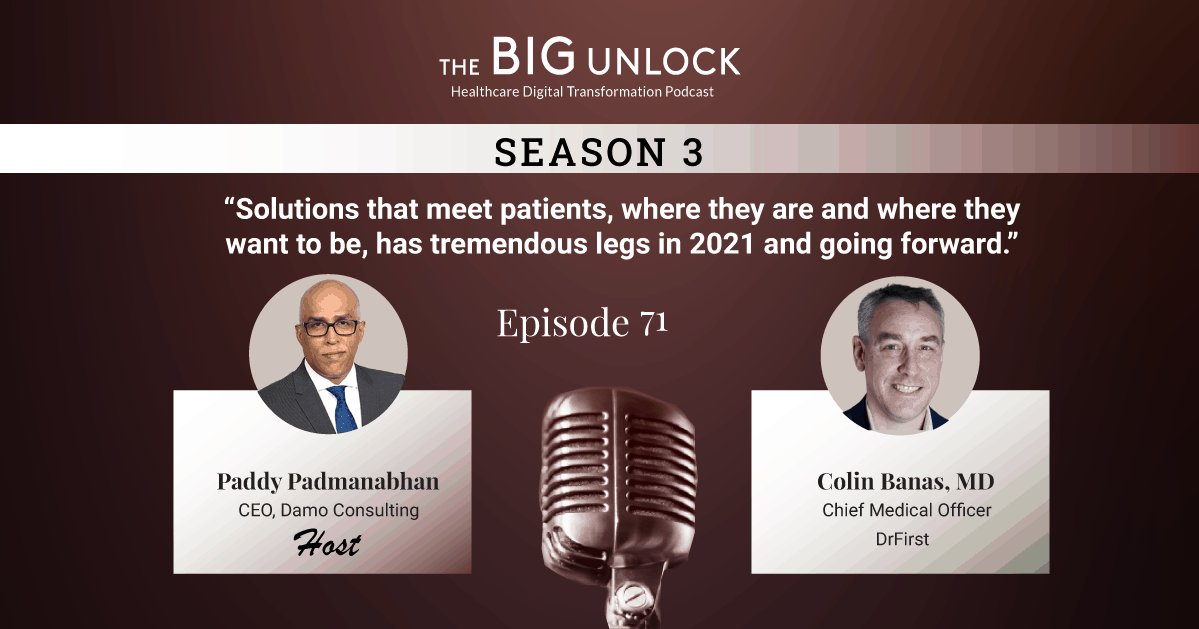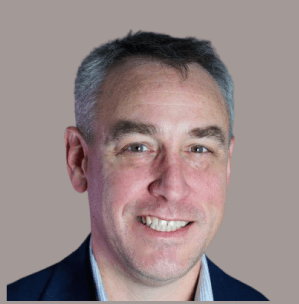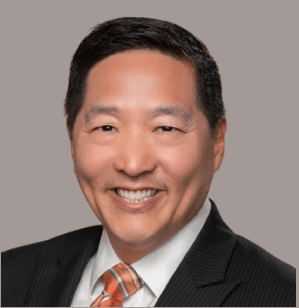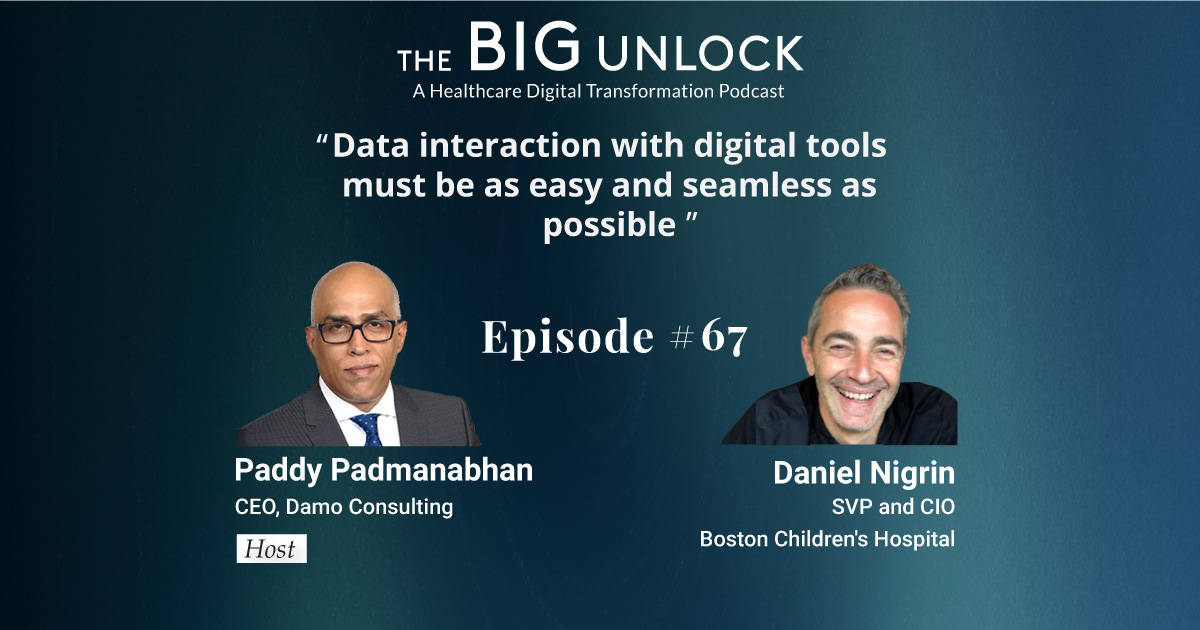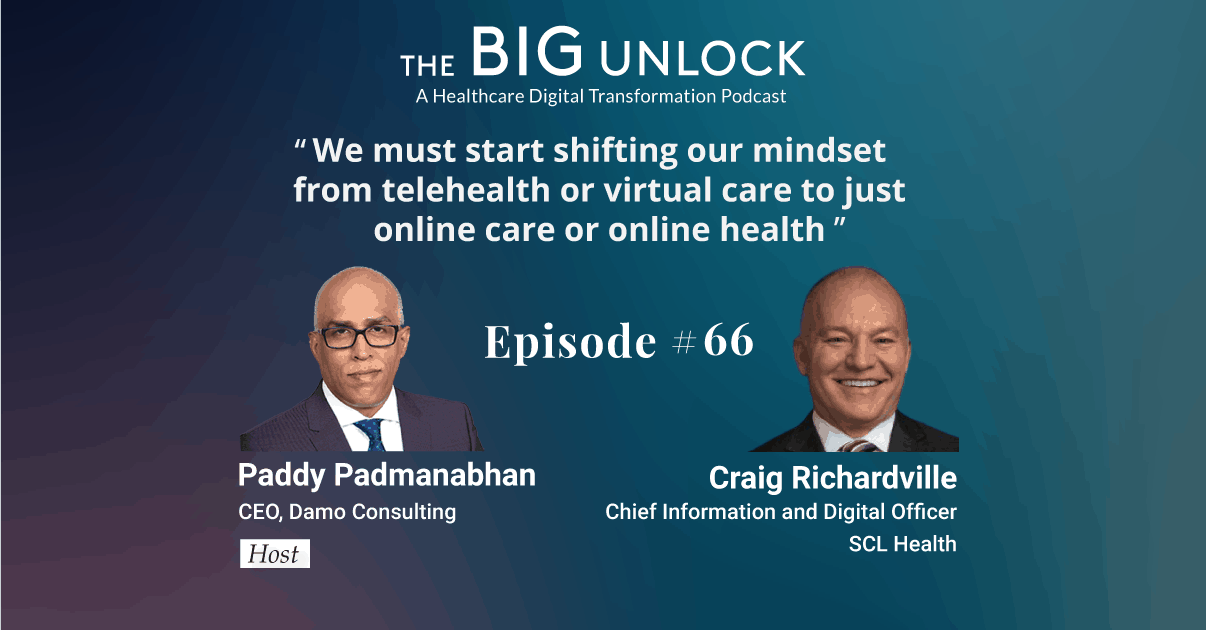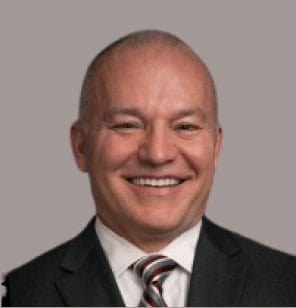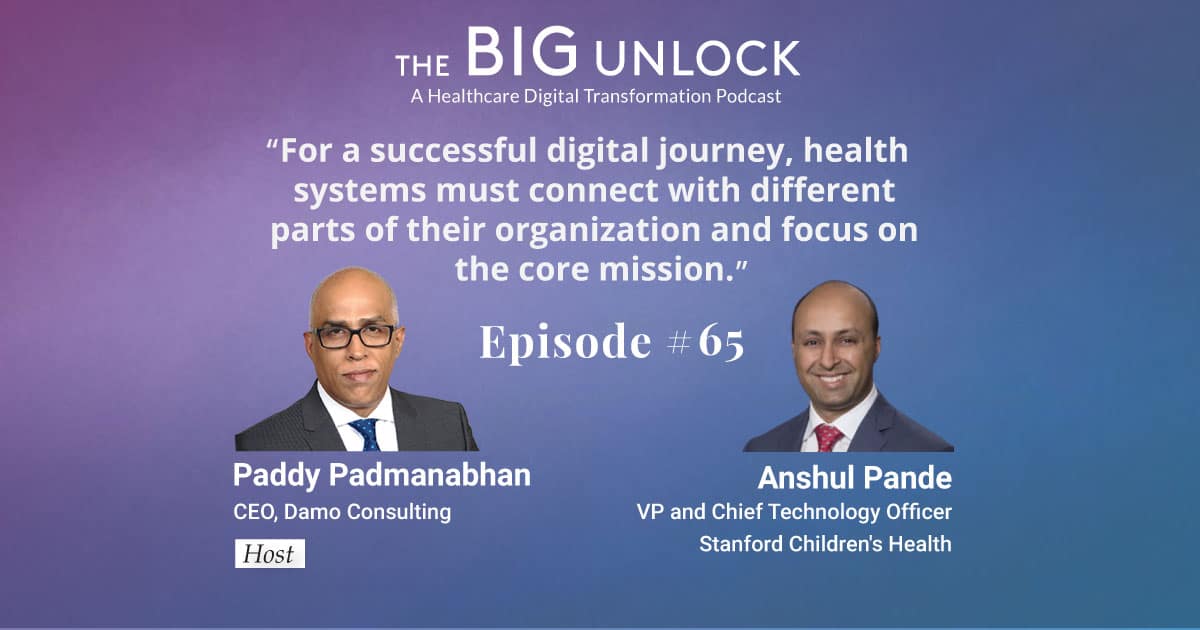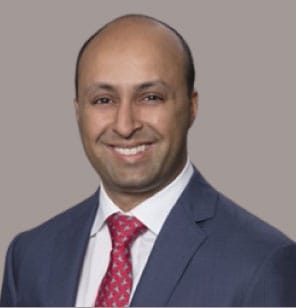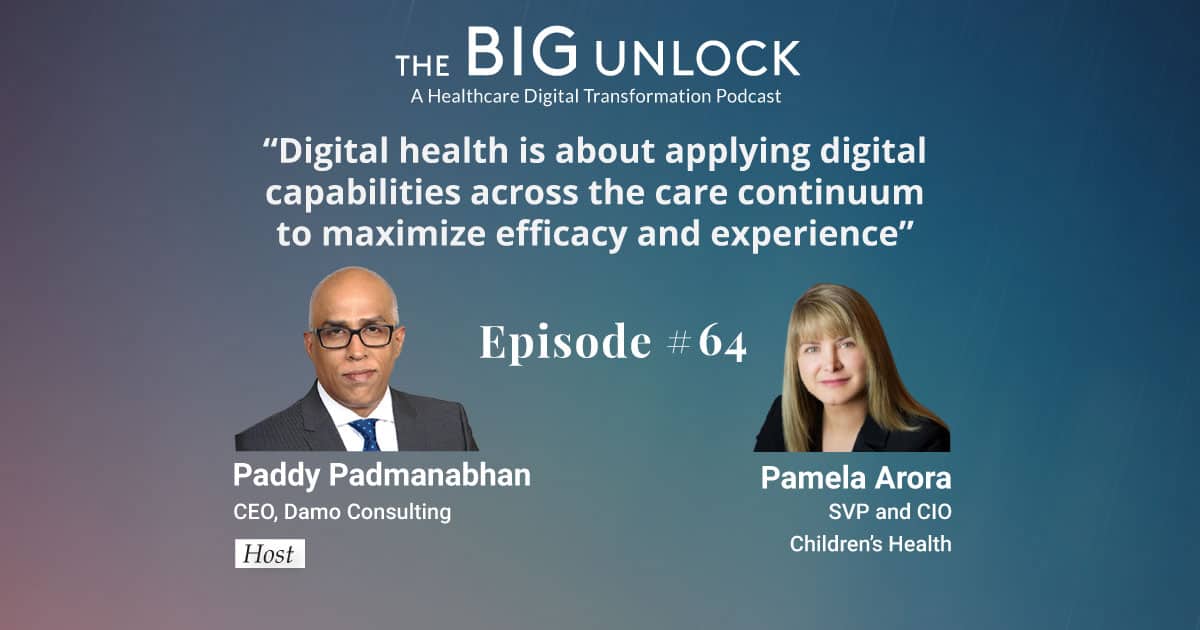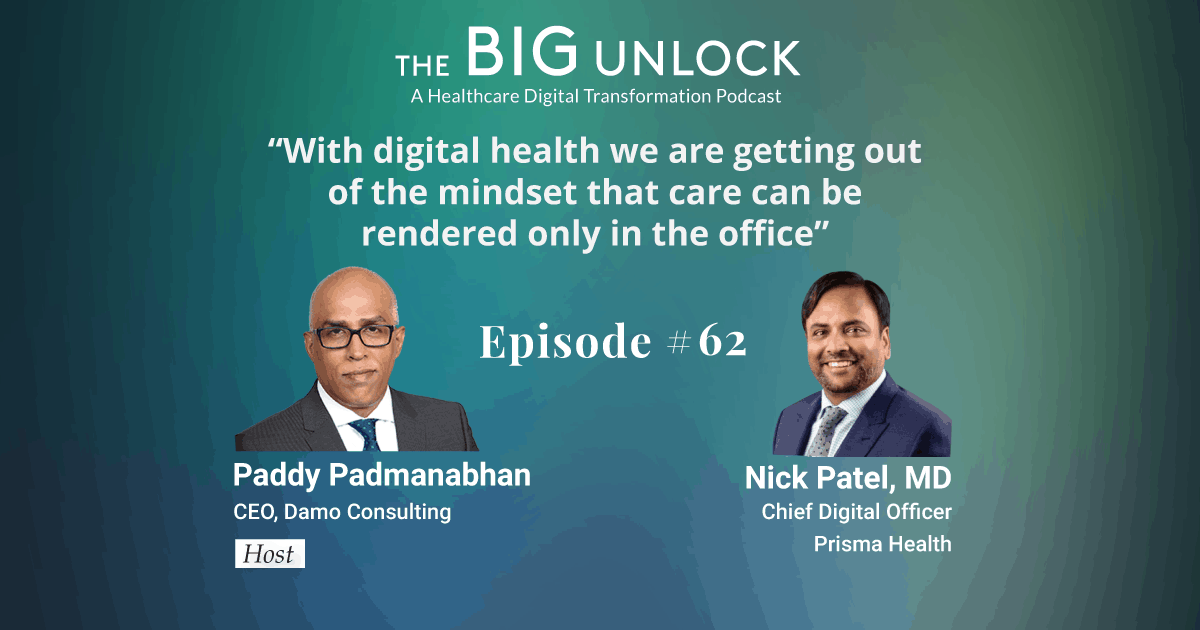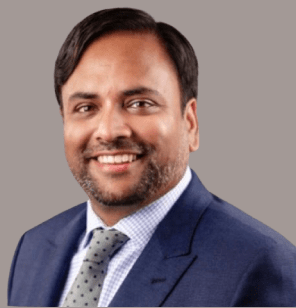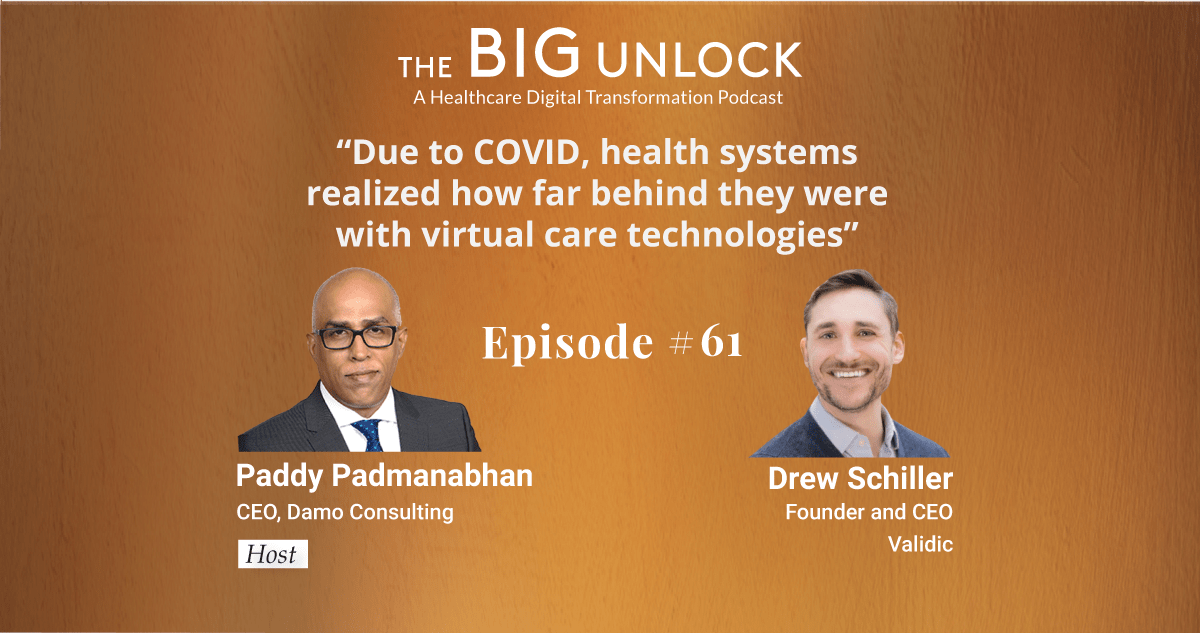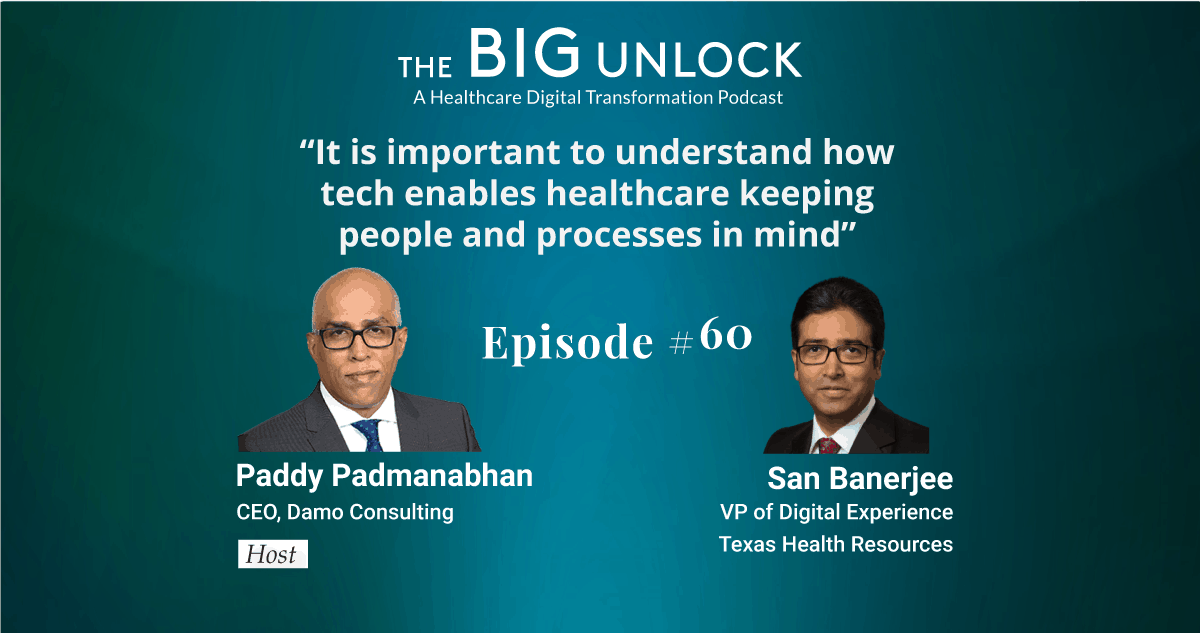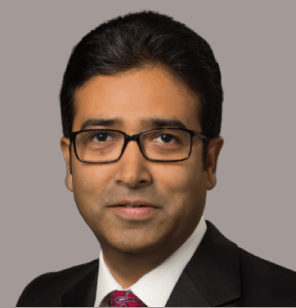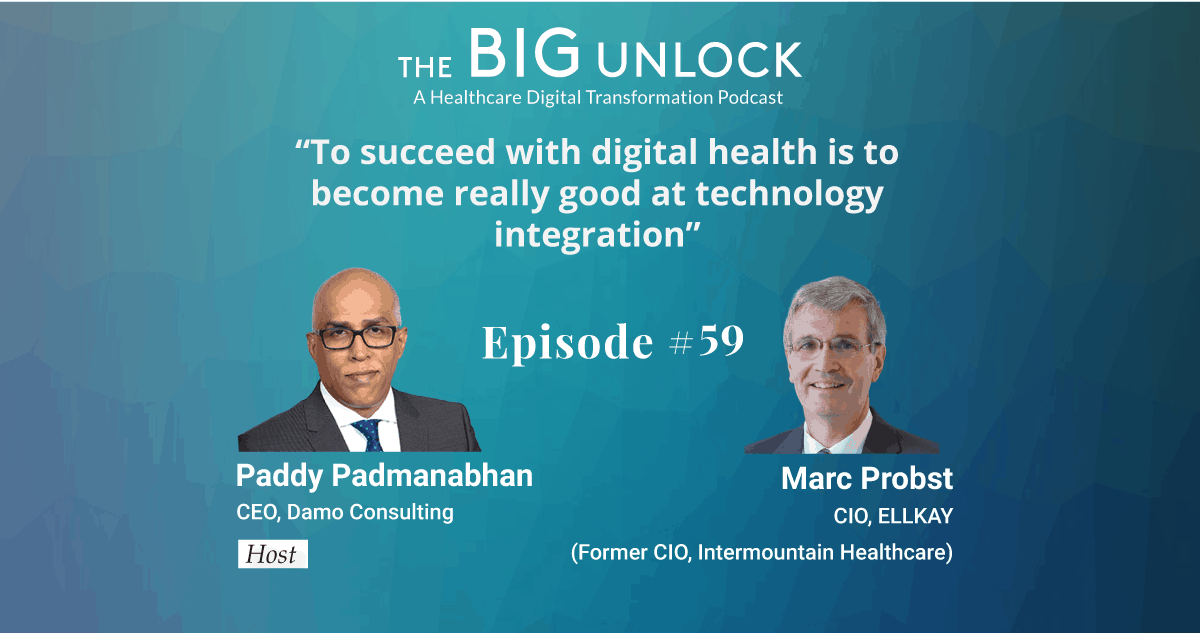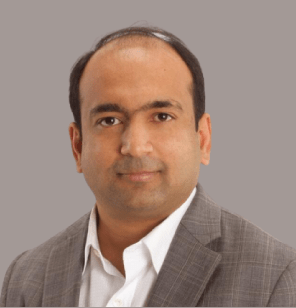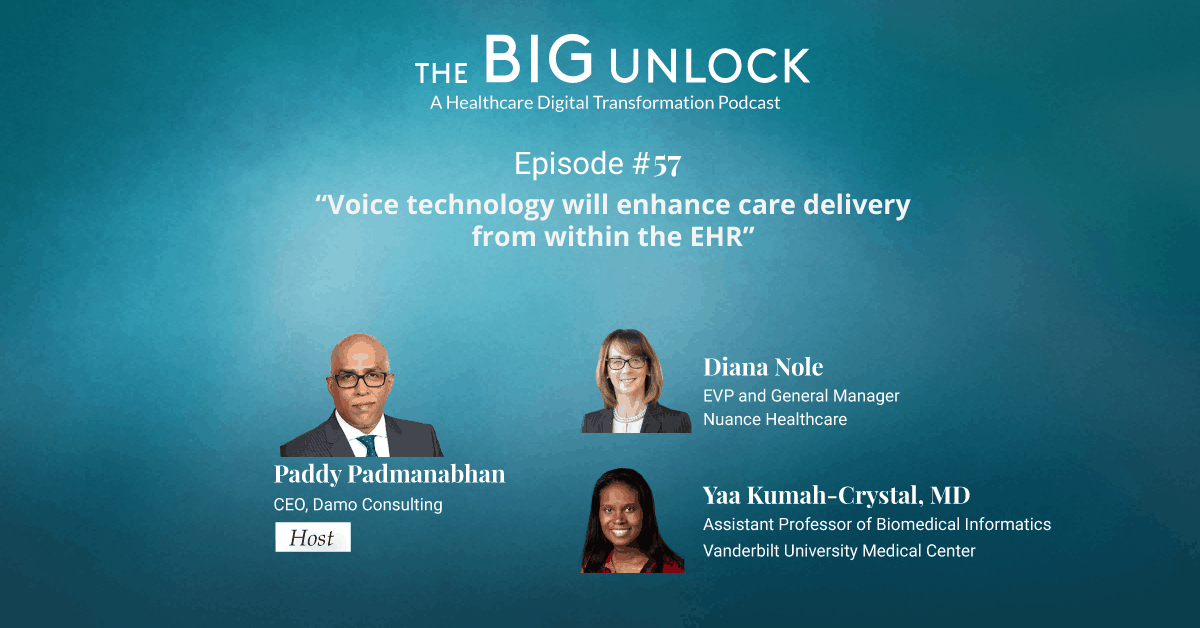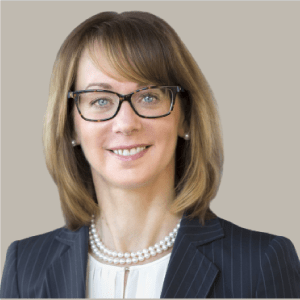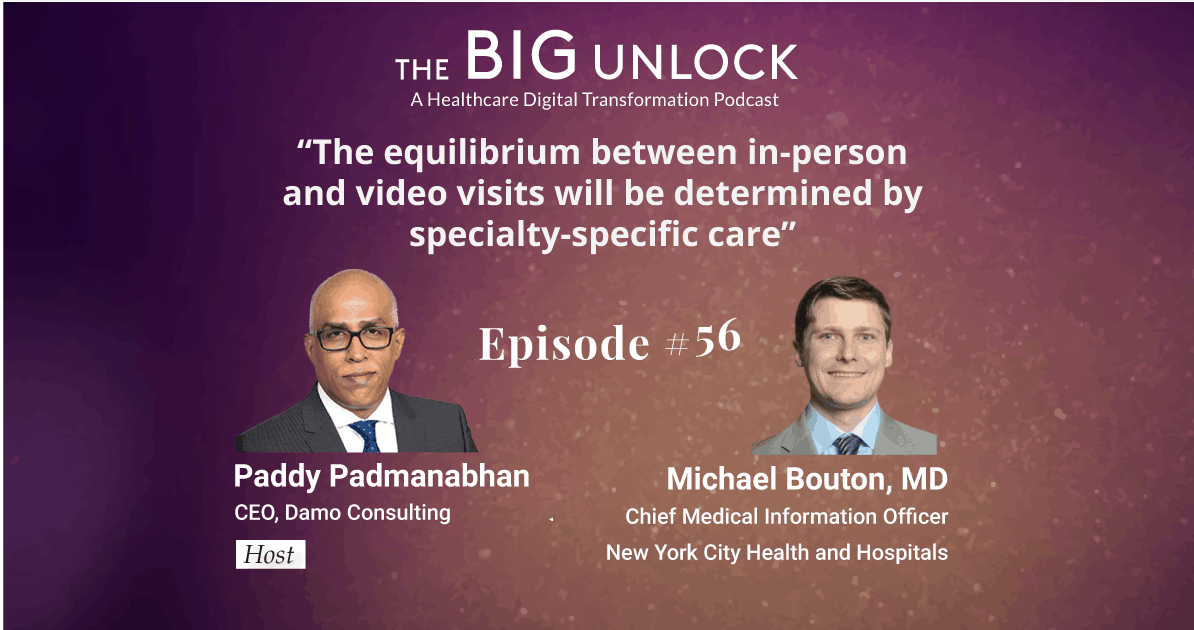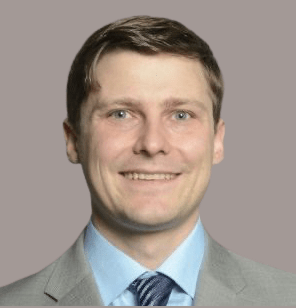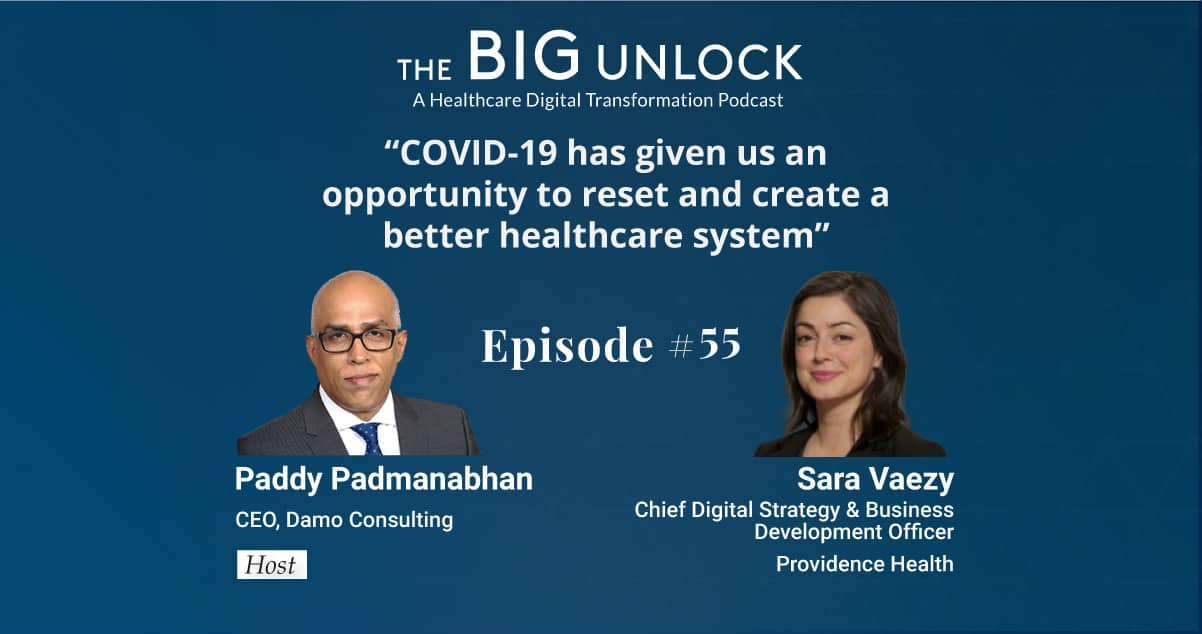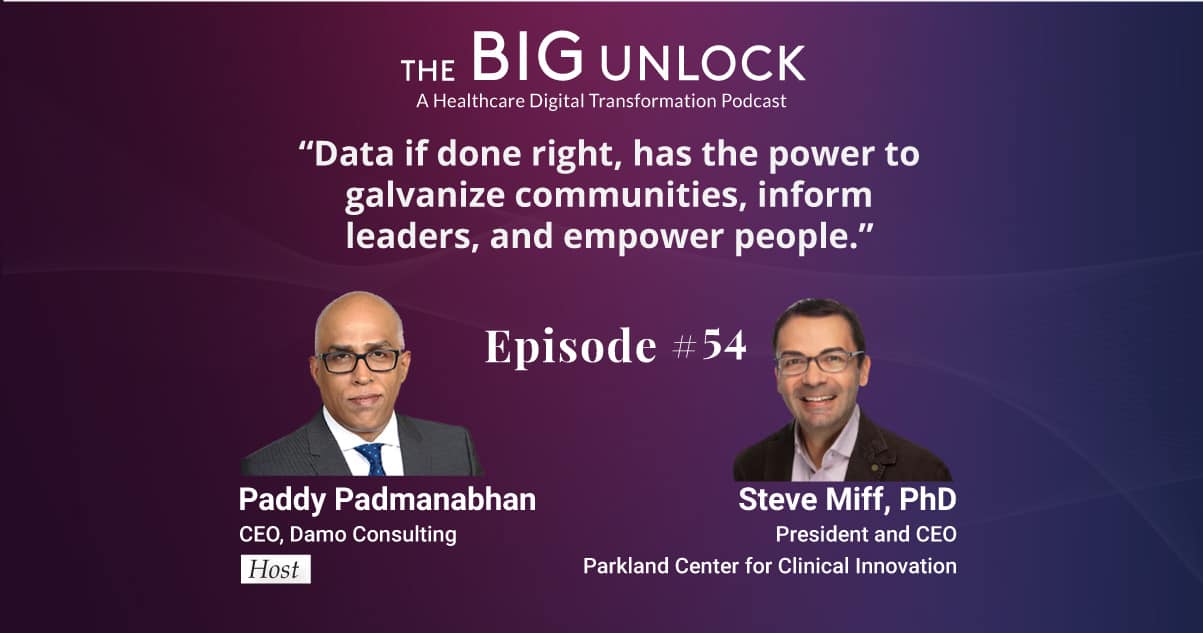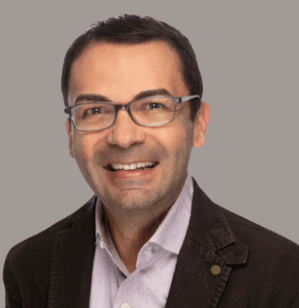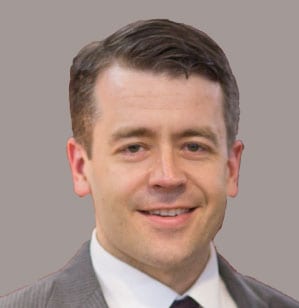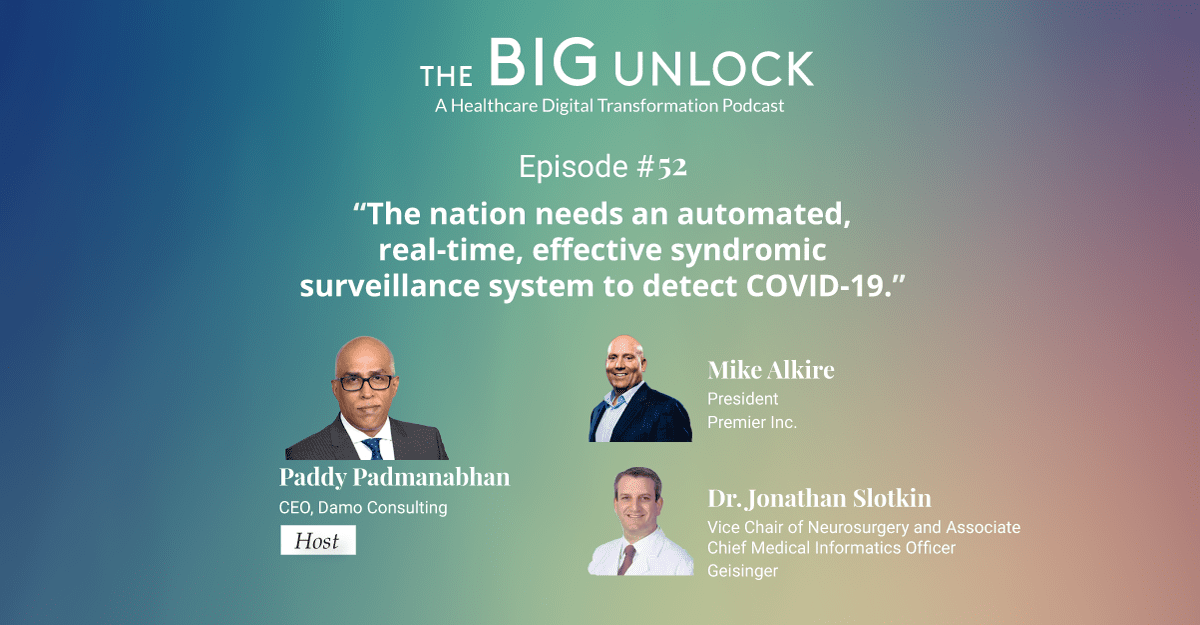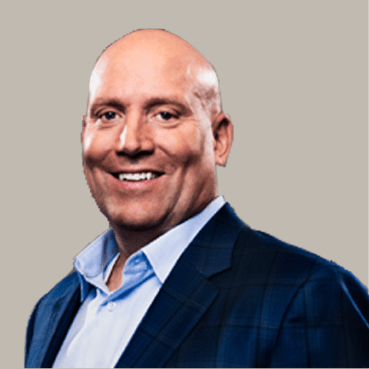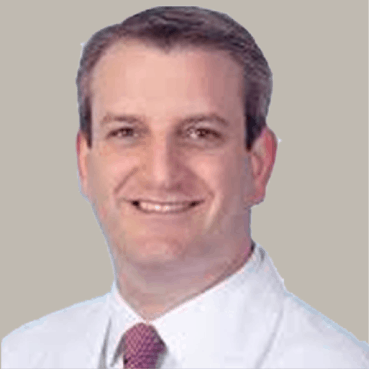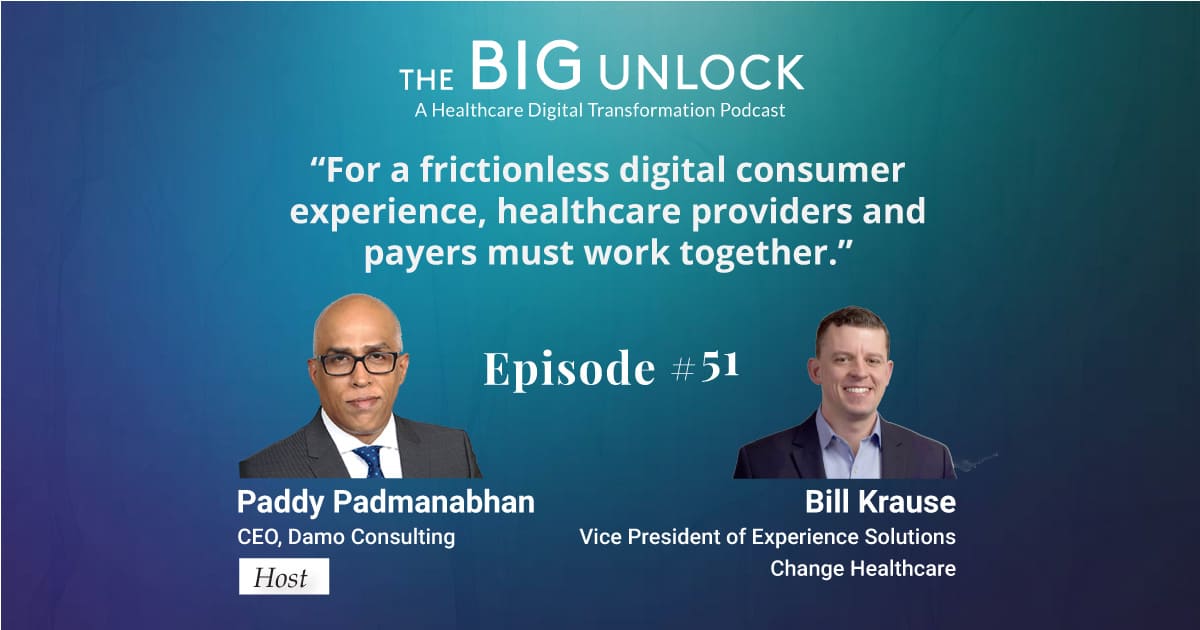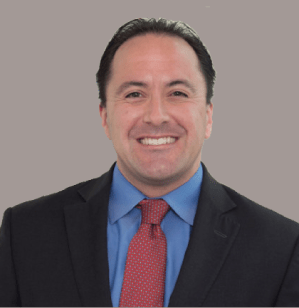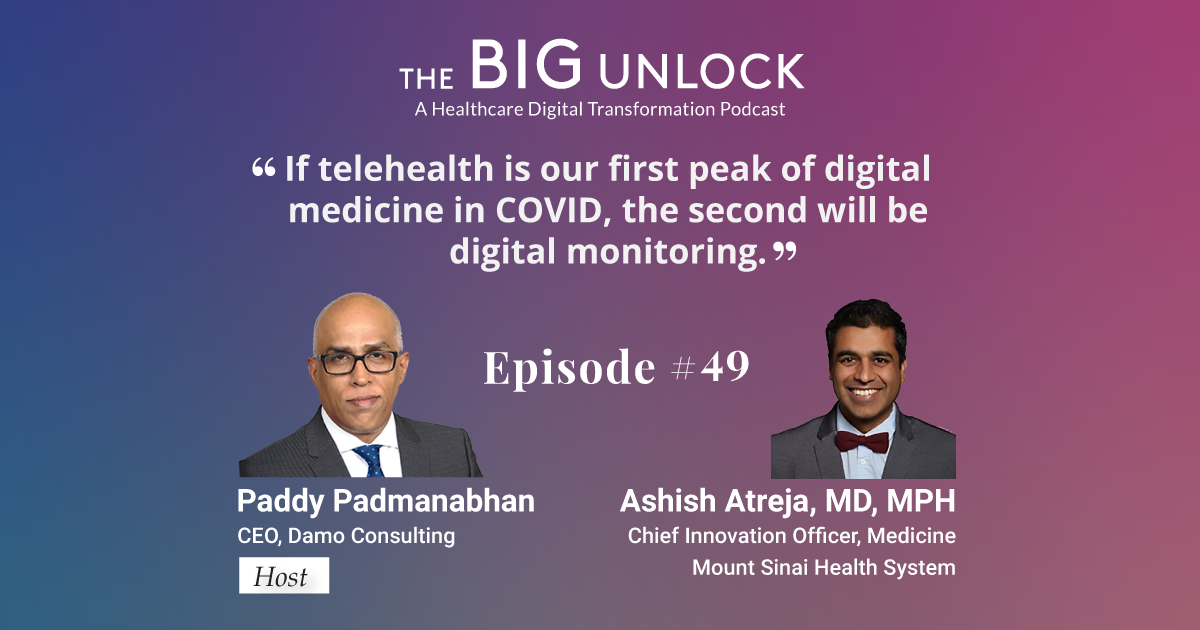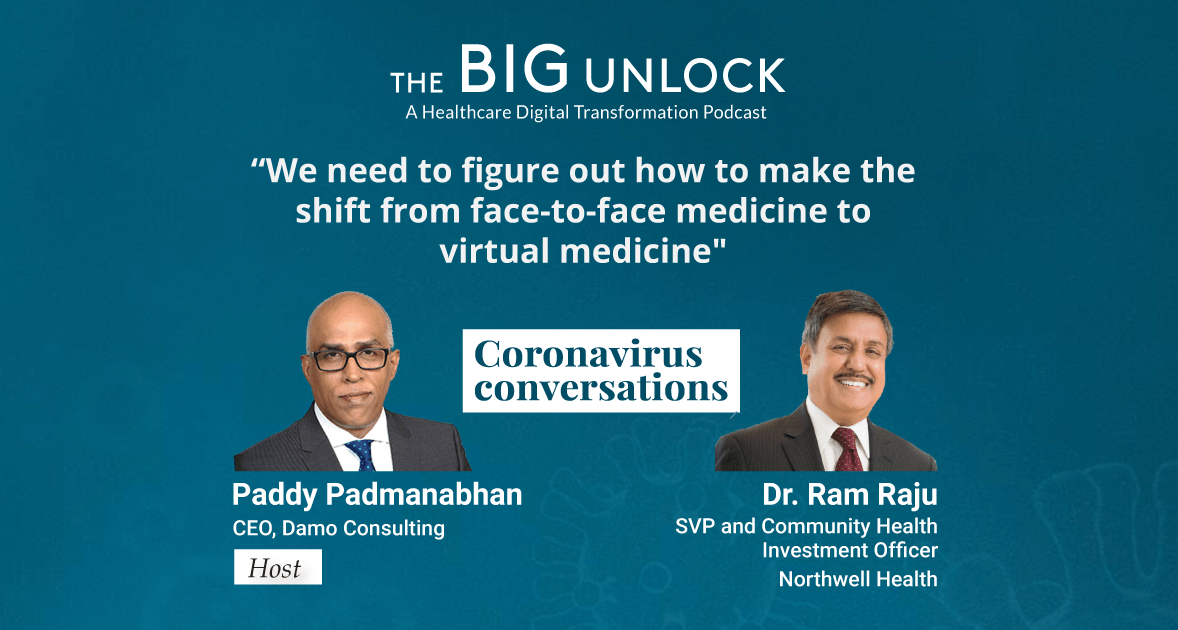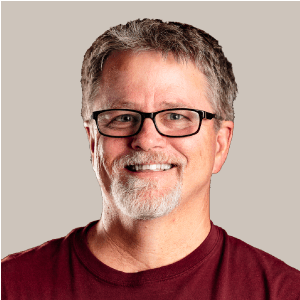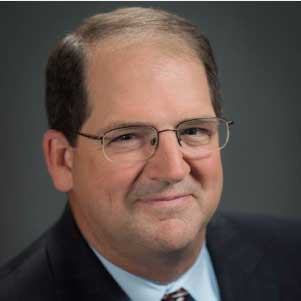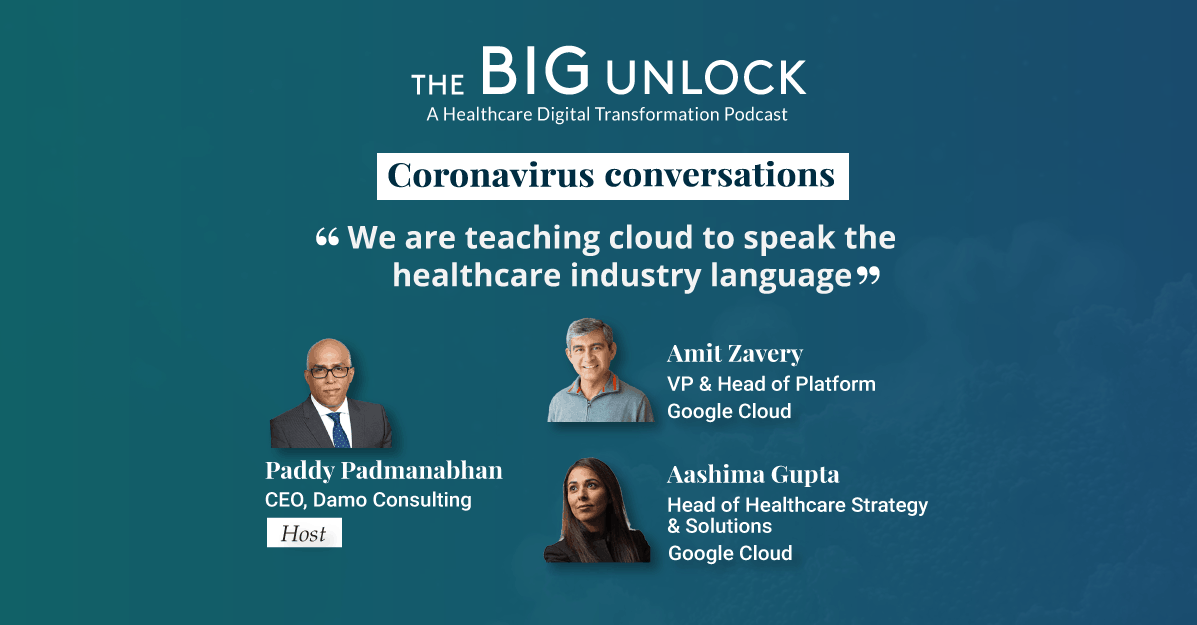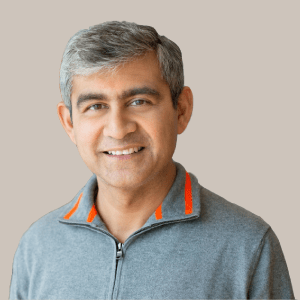Season 5: Episode #140
Podcast with Tanya Townsend, SVP & CIO, LCMC Health
"There is a delicate balance between managing costs and being good stewards of investments in new tools and technology innovations"
 Hosted by Paddy Padmanabhan
Hosted by Paddy Padmanabhan

Share
In this episode, Tanya Townsend, CIO of LCMC Health, a New Orleans-based non-profit health system, discusses how they are leveraging their digital capabilities across the continuum of care and improving patient access and clinician experience across their facilities.
Tanya explains how the macroeconomic environment has impacted their investment decisions this year. She states that there is a delicate balance between managing costs and being good stewards of investments in new tools and technology innovations.
Tanya also talks about how they redesigned their online scheduling tools and patient portal platforms, their journey towards creating an integrated and seamless care experience across service lines, and more. Take a listen.
Show Notes |
||||
| 02:57 | What does digital health mean for you? Talk to us about the digital health program and LCMC. | |||
| 07:16 | Can you share a couple of examples of how you have improved the patient experience, especially from an access standpoint. | |||
| 11:42 | What are your patients telling you? What are the things you're hearing from them that are driving your priorities and your investments? | |||
| 13:42 | As the CIO, how do you go about making your technology choices? | |||
| 15:54 | How has the macroeconomic environment impacted your investment decisions this year? | |||
| 18:55 | What have been some of the successes that you've had in applying artificial intelligence and advanced analytics to help to drive your outcome? | |||
| 21:18 | If a digital health solution founder is listening to this podcast and wants to reach out to you, what's your advice to them before they send you, their pitch? | |||
| 23:12 | What does your org model and governance model look like when it comes to digital health investments? How do you how do you make the decisions? | |||
About our guest
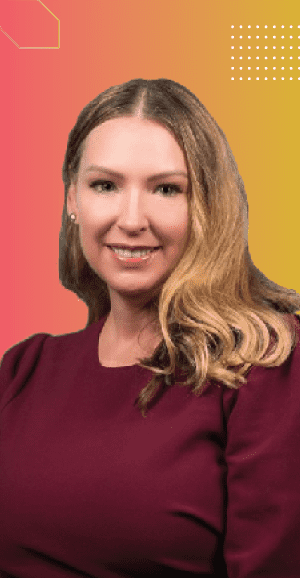
Tanya Townsend is the Senior Vice President and Chief Information Officer (CIO) for LCMC Health and its nine-hospital system. An established financial executive who has been working in the healthcare industry for over 20 years, Tanya held a variety of positions from system analyst to CIO in healthcare organizations and hospitals in Wisconsin before she headed south to New Orleans and the LCMC Health system.
Tanya is committed to staying abreast of best practices across the IT industry – in her role as a division CIO in Wisconsin, she was the first to consolidate and integrate Information Technology, HIM, and Clinical Engineering into a more efficient shared services model. Passionate about the topic of information tech, Tanya has spoken at national events in the industry as well as received numerous acknowledgements and awards for her work. She currently sits on Advisory Boards for several technology firms including NetApp, VMWare, Fortified Health Security, and CHIME. She has been named one of the top healthcare IT innovators in the country, and her dedication to establishing and maintaining state-of-the-art information systems for LCMC Health is highly valued.
Tanya was recognized by Becker’s Hospital Review as one of the 2018 Female IT Leaders to Know.
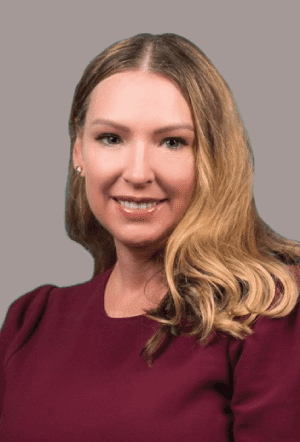
Tanya Townsend is the Senior Vice President and Chief Information Officer (CIO) for LCMC Health and its nine-hospital system. An established financial executive who has been working in the healthcare industry for over 20 years, Tanya held a variety of positions from system analyst to CIO in healthcare organizations and hospitals in Wisconsin before she headed south to New Orleans and the LCMC Health system.
Tanya is committed to staying abreast of best practices across the IT industry – in her role as a division CIO in Wisconsin, she was the first to consolidate and integrate Information Technology, HIM, and Clinical Engineering into a more efficient shared services model. Passionate about the topic of information tech, Tanya has spoken at national events in the industry as well as received numerous acknowledgements and awards for her work. She currently sits on Advisory Boards for several technology firms including NetApp, VMWare, Fortified Health Security, and CHIME. She has been named one of the top healthcare IT innovators in the country, and her dedication to establishing and maintaining state-of-the-art information systems for LCMC Health is highly valued.
Tanya was recognized by Becker’s Hospital Review as one of the 2018 Female IT Leaders to Know.
Q. Tanya, can you tell us a bit about LCMC and the populations you serve?
Tanya: It’s kind of a long journey, but I’ll try to wrap it up there, summarize it. We are originally founded by Louisiana’s only freestanding Children’s Hospital. LCMC originally stood for Louisiana Children’s Medical Center. We just go by LCMC Health now. We have since grown into a healthcare delivery system serving the New Orleans market and the communities in the Gulf South. We kept the legacy of children and pediatrics in our name, which is the LCMC Health piece. We are now in nine hospital locations and Children’s Hospital of New Orleans and several other community hospitals, and we are the area’s only level one trauma center with Tulane Medical Center of New Orleans. We also recently acquired Tulane University Medical Center and its Associated Hospitals. So, we are an academic teaching organization. We train the next generation of health care professionals in partnership with LSU and Tulane Medical Schools, amongst others. For allied health students, where about 3 billion in revenue, 3000 physicians, 14,000 employees, a couple thousand inpatient beds. And we’ve kept the legacy of our founding member, which is Children’s Hospital of New Orleans, in place. But we’ve expanded our services beyond pediatrics. I am the first chief information officer for this organization. It’s formed very rapidly over the years through these mergers. And I have been in my role now for eight years.
Q. In this podcast, we talk a lot about digital health and digital transformation, and I want to focus on that as it relates to LCMC. Can you give us a little bit of an overview of your digital health program? What does Digital health mean for you and talk to us a little bit about the digital health program at LCMC.
Tanya: Sure. We are an organization that did grow through mergers and acquisitions, and so our original goal in our digital health program was to come up with a standardized methodology for systems, for strategies where we could get synergies and really integrate across our continuum of care because we are very locally based here in the New Orleans market. So, all our hospitals geographically wise are very close. And so, it is common for patients to visit any one of our facilities. We really needed to have an integrated digital footprint or electronic health record, which is where we started to make that more of a better patient experience, as well as the opportunity to make that more efficient for our organization and make it a happier or more efficient place to be for our caregivers and our workforce. We were running and somewhere around dozens, if not hundreds of various applications and systems. So, I would like to say you name the electronic health record and platform, and we had it. So that’s what I spent most of the first initial years forming was an electronic health record strategy to again, really integrate care across our continuum and remove some of those redundancies, creative efficiencies, and make that again, a better experience for our workforce as well as our patients. So, step one was to set down that path of creating a centralized shared services model and that common vision. And we did end up selecting Epic as our electronic health record. So, our initial phase of that was in 2017 and we did do Big Bang. So, everything from ancillaries to inpatient to ambulatory to revenue cycle, all of it was big bang and we rolled out. At that time, we were five hospitals and that was all conducted over the course of about a year. So, between the end of 2017 through mid-2018, we were up and running on all of those facilities. And then we acquired another hospital in the middle of the pandemic in 2020. So, we spent the last couple of bringing them into the fold onto the platforms and we are now embarking on that same process for our latest acquisitions with Tulane, which is another three hospitals. And we plan to have them up and running within about a year. So, all of that said, that’s been keeping us very busy and just putting the foundation in place. And now we’re really looking forward to moving past, you know, having the foundation and really leveraging additional digital capabilities for advancing what we can. So right now, we’re really focused on our journey towards systemness. So really developing those standards across service lines, across our continuum of care, because again, our patients in the geography that we serve is very close in proximity. So, we want that to be a seamless and common experience and focus on systemness. We’re also really focused on patient access, and we’re very aware that patients do have a choice and we want to make sure that we make it as easy as possible for patients to access our system. So, we’ve done a lot around that. And then lastly, also not just focus on the patient, but also continue to focus on our clinician experience. So, almost just as much rigor and focus on the clinician experience and happiness and creating user friendly tools that makes it easy to do their job and yet meet all the regulatory requirements and compliance things that are always coming at us for documentation.
Q. Can you give us a couple of examples of what you’ve done to improve the patient experience, especially from an access standpoint.
Tanya: Sure. One of our most recent experiences, which I will tie into even that systemness category that I just mentioned, we just recently did a full redesign of what we call our online scheduling tools and platforms. So, we do have a patient portal there. We were allowing scheduling of it when we went live with Epic a few years ago. But on this journey towards integrating care and making it a common seamless experience across service lines. We revamped, revised all of that and ensured that it was easy to create, to schedule a patient through our platform for, let’s just say, primary care. So, if for some reason my normal physician that I normally see wasn’t available, but I really needed to get in for an appointment, we now make it very easy to search our entire database of availability to get in with the next provider, even if that might not be at the same clinic that that I normally would have seen. So, that has been a huge improvement just in terms of schedule utilization and visit volume increases. So, it’s been a win-win not only for the patients to have easier access, but also, it’s a growth opportunity for the healthcare system. We’re going to start with that and continuing to look at ways for how we improve access. Referrals is another area that we’re going to start looking at again, just making that an easier process to get patients to where they need to be within our system.
Q. What about the clinicians? You mentioned that you’re also trying to provide features and functionalities to help make their jobs and their lives better, right? Can you talk about an example of what you’ve provided for them?
Tanya: Sure. We just recently, it’s still in progress, none of these things are ever done right. As it’s a continuous evolution, continuous improvement. So, one of the projects that we also launched this past year was called Project Joy, and it was a very targeted effort to focus on nursing specifically because I’m sure we are aware of the nursing shortages that many of us are facing. It’s a real challenge to not only retain the nursing staff we have, but also attract and recruit new nurses. How do we make sure that we have an environment that they like? Project Joy, in partnership with our Chief Nursing officers, was an effort to evaluate utilization of our electronic health record. So, now that we have the data in a digital format, it makes it much easier to do some targeted analytics and analysis on where our nurse is spending their time and then really dig into. At a glance we found that some of our nurses were spending an inordinate amount of time in flow sheets and responding to what we called non required best practice alerts. It was almost just kind of an FYI sorts of messages, but not actionable. We spent a lot of time in partnership with our chief nursing officers to identify how can we make these glow sheets a little bit more user friendly and how do we reduce the amount of clicks or interruptions that the nurses face with these alerts that may not really be effective. On our first phase of rolling out the changes to that project, we were able to calculate savings of over 1000 hours per month to give back to our nurses to do other things such as care for our patients at the bedside.
Q. That’s another great example of how you’re really making it work for both the patients and the caregivers. What are your patients telling you at a high level? What are the one or two things you’re hearing from them that are driving your priorities and your investments?
Tanya: We started to get a lot of very positive feedback when we did these revisions around online scheduling and ease of access. And the other thing that was probably another good example, although it’s a little outdated now, but our ability to respond to the pandemic. Obviously, that was a rapid change and we stood up telemedicine overnight. We also did a great deal on what we called mobile testing. So, if patients weren’t in a place that they had easy access, we had busses that were out in our community offering testing and then also did the same thing for vaccinations. When those became available. We really stood up the technology pretty much almost overnight and to be able to have a massive vaccination location that made it easy for patients to get in and out and even looked at some rideshare type of programs for ensuring that transportation wasn’t necessarily an obstacle or barrier in terms of where to get access. So those are just a few of the examples of the great feedback in our community that patients are excited about.
Q. Let’s talk a little bit about the tech. You have got a lot of technology choices. Your major EHR system, which is Epic, is doing a lot in terms of building out their product on their platform with their digital capabilities. You also have a thriving ecosystem of independent software solution providers. This could be everyone from, very well-established firms, but also startups from the digital health ecosystem. As the CIO, how do you go about making your choices and talk to us a little bit about your thought process.
Tanya: That is such a great question, and I don’t think any of us really have the perfect answer. I think we’ve made a lot of strides over the last few years. I think, again, the pandemic really pushed us into this agile, innovative space of not having the ability to wait for perfection and needing to take some chances or risks, hopefully calculated risks. I don’t have a perfect answer, but what we try to do is really align with our overall strategic plan. We do we do have an Epic first mentality, meaning let’s not reinvent the wheel if Epic already can or is doing it, we’ll probably look at that first just because it is already part of the tool that we’ve purchased and invested in. And there is something to be said about complete integration from the start. So, we start there, align with the strategic plan, and then identify where those gaps are. While I think that does an awful lot, they don’t do everything so really targeting and again what are our strategies, where are the gaps and identify where those possible solutions can fit. And even what we call interoperability and integration has really come a long way too. We’re not stuck with just HL7. There are so many more capabilities now in how we can integrate with our core platform. So that’s not so much a barrier as it used to be in years past, but it is something important to ensure that integration is hopefully seamless as can be for both the user experience as well as just continuity of care. If we are talking about patient information.
Q. How has the macroeconomic environment impacted your investment decisions this year? You’ve got a labor shortage; you’ve got an interest rate. There’s a lot of there’s a lot of forces in play in the market.
Tanya: Yeah. Another great question! In the healthcare industry, we are facing issues with reimbursement rules changing and the inflation also continues to rise. So, we really do have to make sure that we’re managing our costs and being good stewards, which is difficult to do when at the same time we just talked about innovation and new tools and investment. It really is a delicate balance. So, while we’re working on enabling new digital technologies that will hopefully drive revenue or improvements, and that’s a key to making sure that we continue to measure that. But also, where can we eliminate costs or really push on opportunities? So, a big opportunity for us because of all the mergers and acquisitions we did was application rationalization. So, as we brought these nine hospitals together, they had a little flavor of just about every application you can think of. That was a huge part of opportunity, is let’s standardize on the application footprint, let’s archive that data as necessary and let’s stop paying maintenance on those systems. So, we’ve done a lot of that over the years. So, some good stories to tell there and making that a priority, but also looking at new cost models. So of course, cloud computing is a whole new method of managing infrastructure compared to the sort of traditional way of buying servers and trying to predict what you were going to need, five years in advance. Now it’s a little bit more consumption based. That’s just a new cost model to evaluate. We already talked a little bit about innovation, but because of the shortage of whether it’s nursing or revenue cycle, where are the opportunities to use some artificial intelligence or maybe what we can call the digital employee experience, where we can get creative on how we can automate certain functions within our organization there where we are having shortages of labor. That’s also not an easy answer, but let’s continue to explore that. And then I already mentioned the project your way around. How do we just keep our clinicians happy and save them some time along the way?
Q. You mentioned artificial intelligence and the use of data analytics. How far are you along in that journey into. Terms of using your data and what have been some of the successes that you’ve had in applying advanced analytics to help to drive your outcomes.
Tanya: I would say that every one of our projects has some sort of metrics or analytics attached to it, and we make that a priority or a requirement before we launch any initiative. How are we going to measure this, what are our goals? Let’s make sure we’ve got a baseline and we’re prepared to measure both during the implementation and then post implementation. It’s something I’m very passionate about. I do have the business intelligence team. It’s good that we can really partner up with our EHR analysts and then our business intelligence data miners to marry that conversation. If I use EPIC for an example upon implementation, for every single module or service line, we did establish goals and we’re prepared to measure those goals during the implementation. I already mentioned the online scheduling. We just completely revised that, and we made sure we were ready to measure. We set our baseline and one month into the implementation we were able to show the metrics like – this is what it looks like last month and this is what it looks like last year and look at the improvement that we saw in just one month. I mentioned – Project Joy, we were able to measure how much time nurses were able to save just by fewer clicks and able to put more documentation at the bedside capabilities through the flow sheet modification. So, we were able to track that to how many minutes we were saving. So those are just a few examples.
Q. There’s a lot of innovation that is taking place in the market right now in terms of digital health solutions. If one of their founder CEO is listening to this podcast and wants to reach out to you, what’s your advice to them before they send you, their pitch?
Tanya: I think we covered a lot of it during this conversation. But if I could summarize maybe the key things to take away. One is really partnering so the CEO and the CIO or operations and IT collaboration to really understand the strategic initiatives or priorities of the organization and prepare to partner on that conversation around measuring accountability and on all parties, whether that’s a vendor solution, internal IT, nursing. Make sure everyone’s on the same page with what we’re measuring and why and the accountability around that. I like to say that even in data conversation, it’s one thing to produce the data. We now have lots of data, but accountability and responding to the data is I think kind of the next step of really making it meaningful. Then the other thing I think is just having conversations like this and staying connected to what the industry is doing, what others are doing, learning from others, just staying connected in the healthcare community. I truly do believe while we can learn from other industries, healthcare is a unique industry when it comes to technology, and it is really a small world at the end of the day for the healthcare IT community at least. So, leverage those conversations and that network to continuously learn from each other.
Q. What does your org model and governance model look like when it comes to digital health investments? How are you organized? How do you make the decisions? Is there a committee?
Tanya: Sure. We have a tiered approach. I call it sort of three layers of the triangle or the pyramid. At the base of the pyramid as your foundational pieces of the structure. So that’s where our subject matter experts get together routinely to talk about what the priorities are, whether they’re changes or optimization or new ideas that start there. And then above that, we call our operational layer. This is where our chief operating officer, our chief nursing officer, our chief medical information officer, sit. Their goal is to oversee trying to ensure that one group doesn’t necessarily make a decision that might negatively impact a different function down the road. They’re looking at that continuum of care for the decisions that we’re making. And then at the top level is the executive team. So, we do have what we call it together, which is our IT steering committee that is comprised of a handful of executives, including myself. Our goal is to really set the strategic priorities for the organization and ensure that there’s alignment within the framework. We also ensure that we’re utilizing resources in a shared fashion across everyone’s needs, which is tricky to do because like I mentioned earlier, we have pediatrics, and we have level one trauma academics. And so, making sure that all needs are met within that shared model can be tricky. Every committee has a chair and a co-chair. The chair is somebody from operations. We like to use the motto operationally led and supported. So, the chair is somebody from nursing or radiology, etc., and the co-chair is somebody from the IT functions or a leader on my team. And they are partners in establishing the teams and the cadence and the conversations. And then every facility is represented through that subject matter experts’ layer. And so, if you have additional questions after that, but that is how we’re structured.
We hope you enjoyed this podcast. Subscribe to our podcast series at www.thebigunlock.com and write to us at [email protected]
Disclaimer: This Q&A has been derived from the podcast transcript and has been edited for readability and clarity.
Recent Episodes
About the host
Paddy is the co-author of Healthcare Digital Transformation – How Consumerism, Technology and Pandemic are Accelerating the Future (Taylor & Francis, Aug 2020), along with Edward W. Marx. Paddy is also the author of the best-selling book The Big Unlock – Harnessing Data and Growing Digital Health Businesses in a Value-based Care Era (Archway Publishing, 2017). He is the host of the highly subscribed The Big Unlock podcast on digital transformation in healthcare featuring C-level executives from the healthcare and technology sectors. He is widely published and has a by-lined column in CIO Magazine and other respected industry publications.

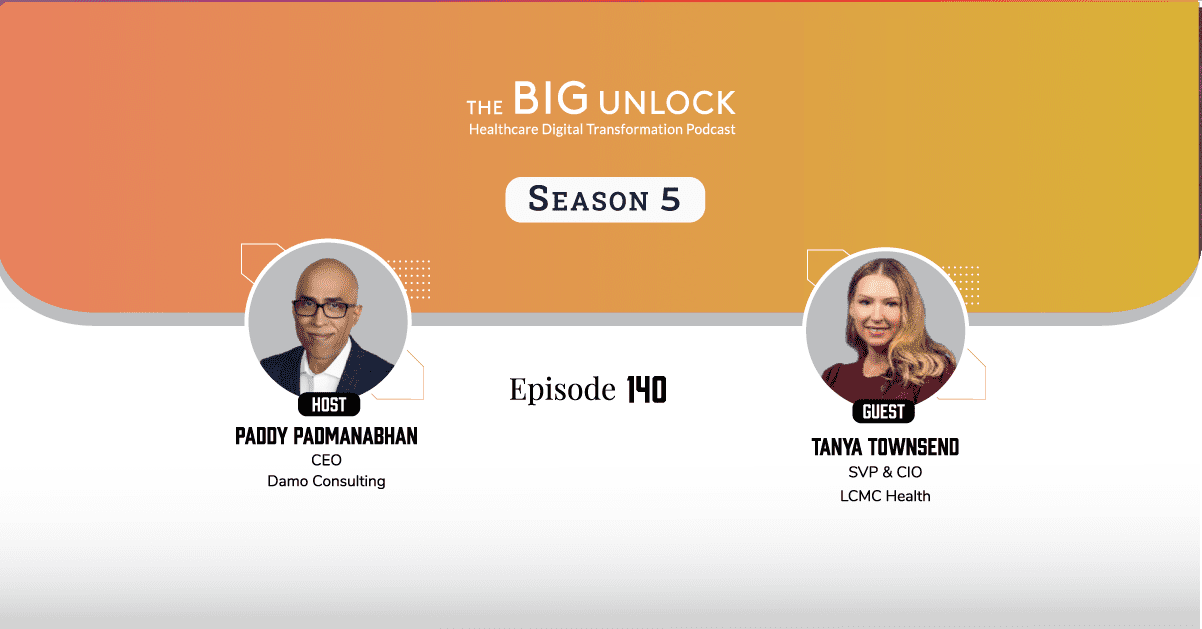

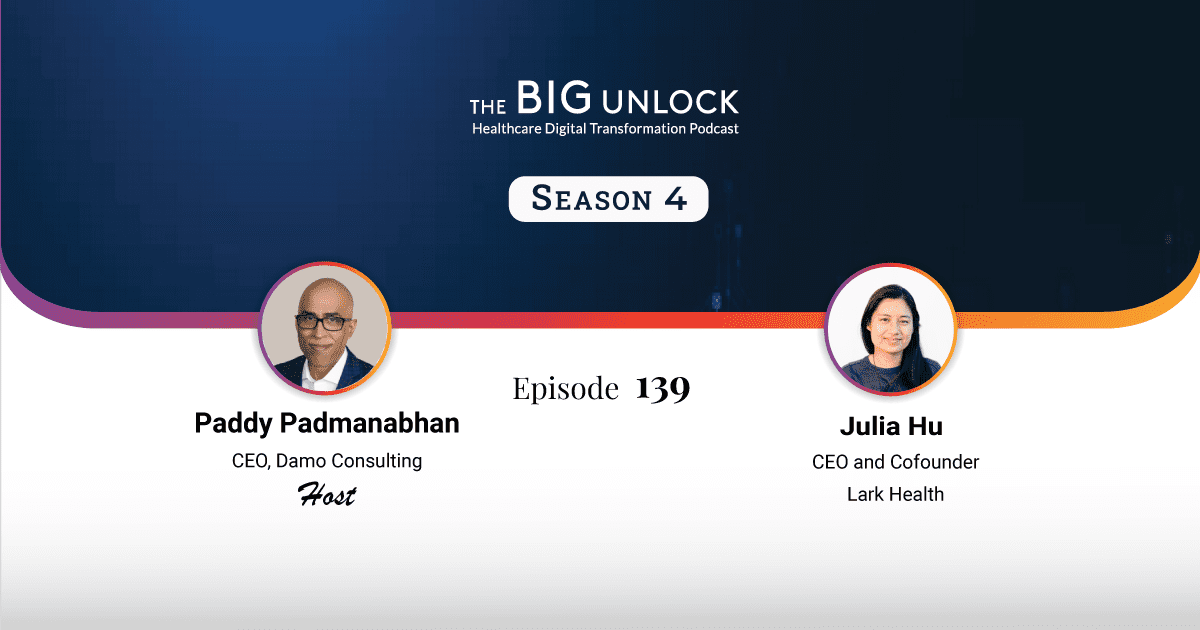



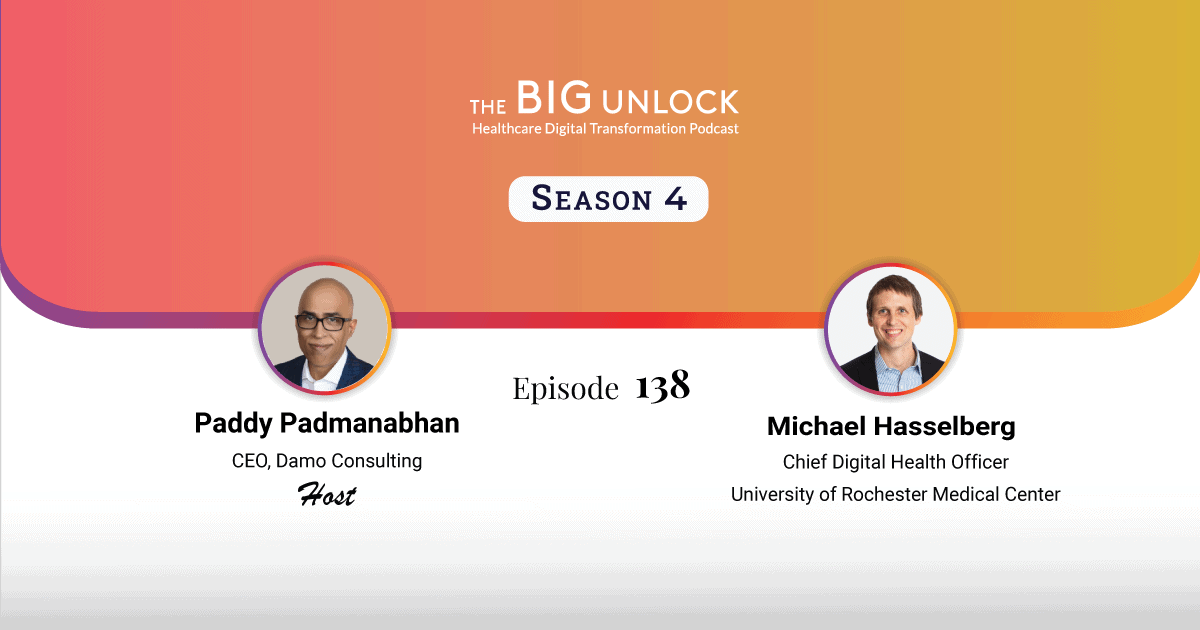

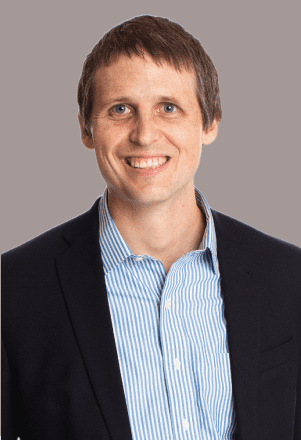


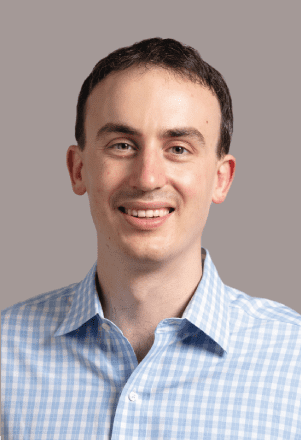
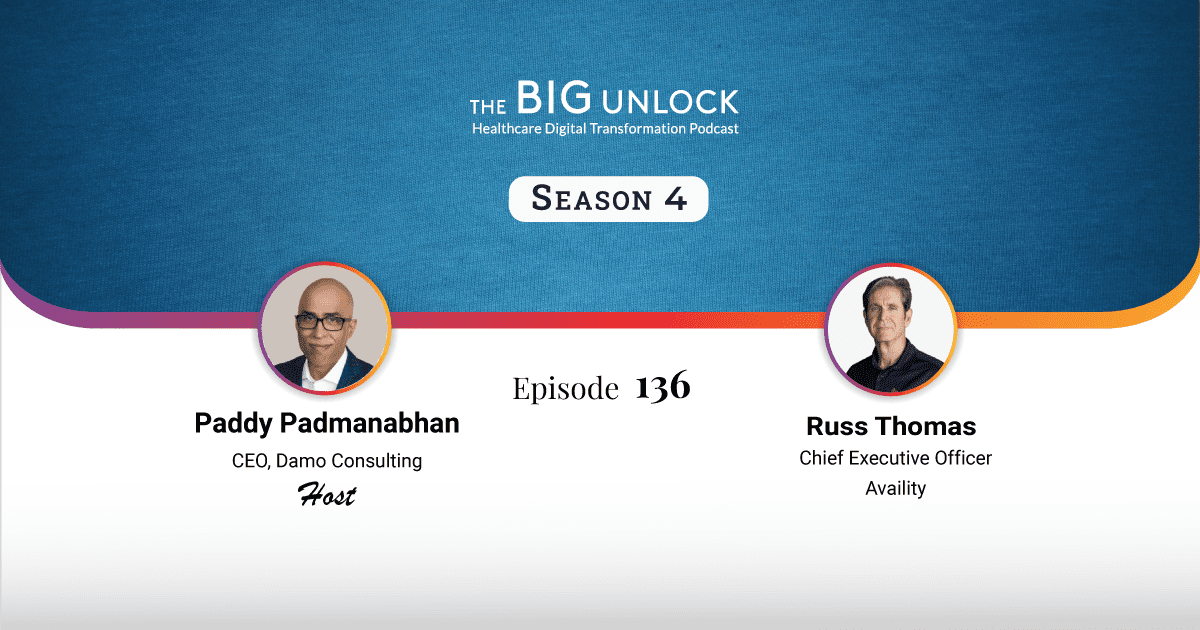

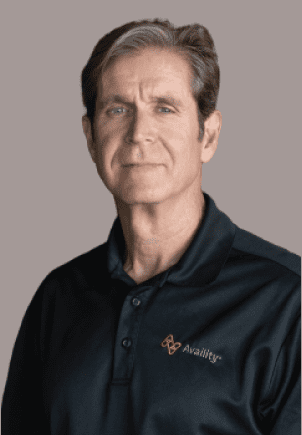
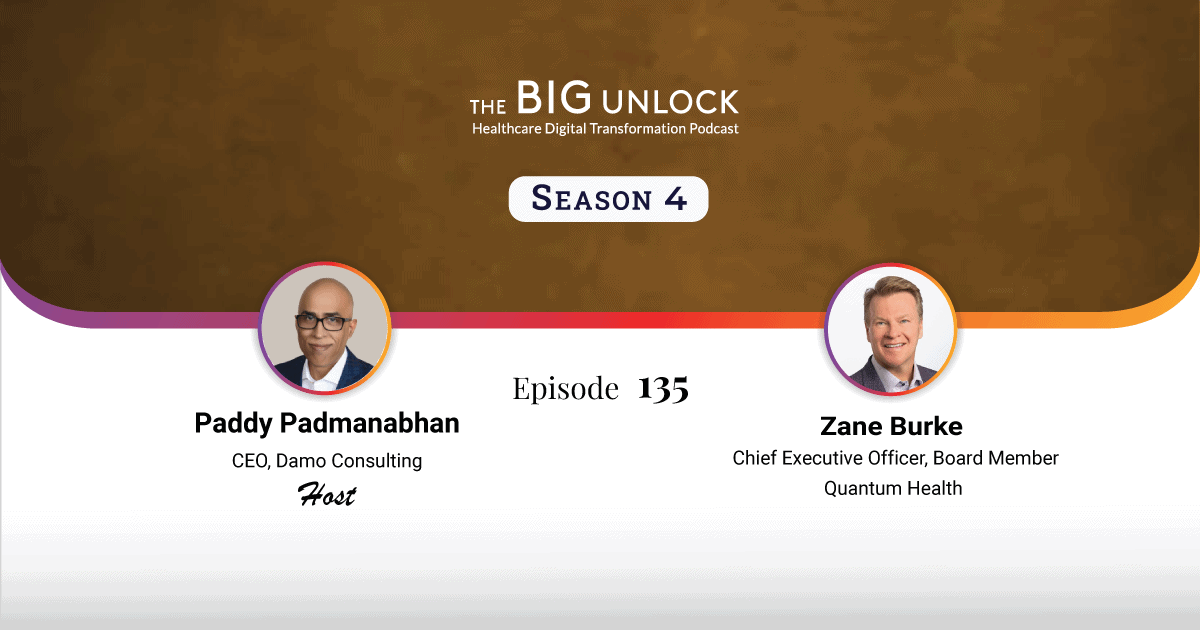
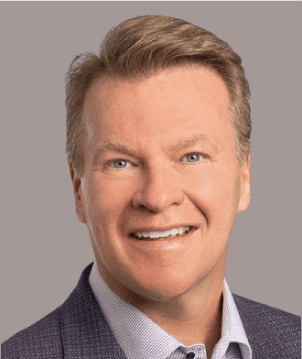

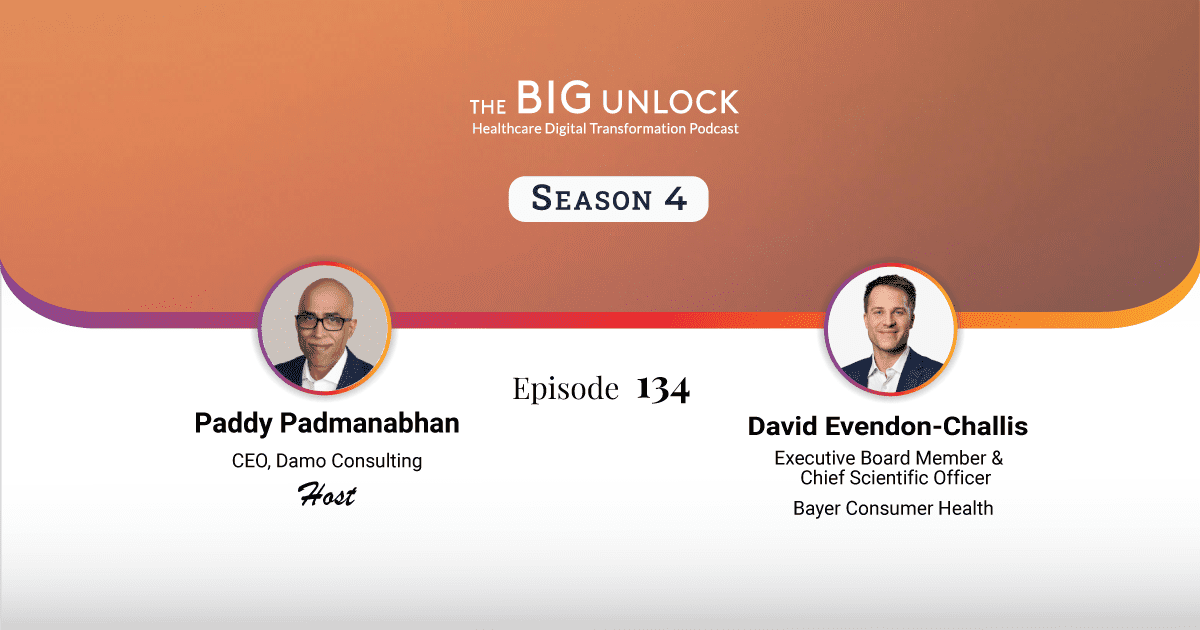
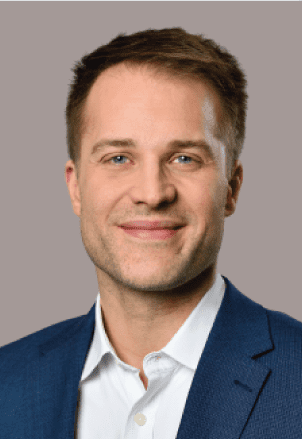
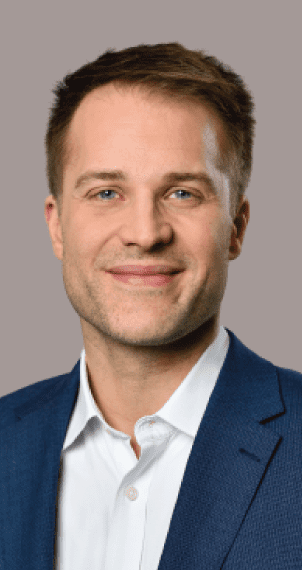
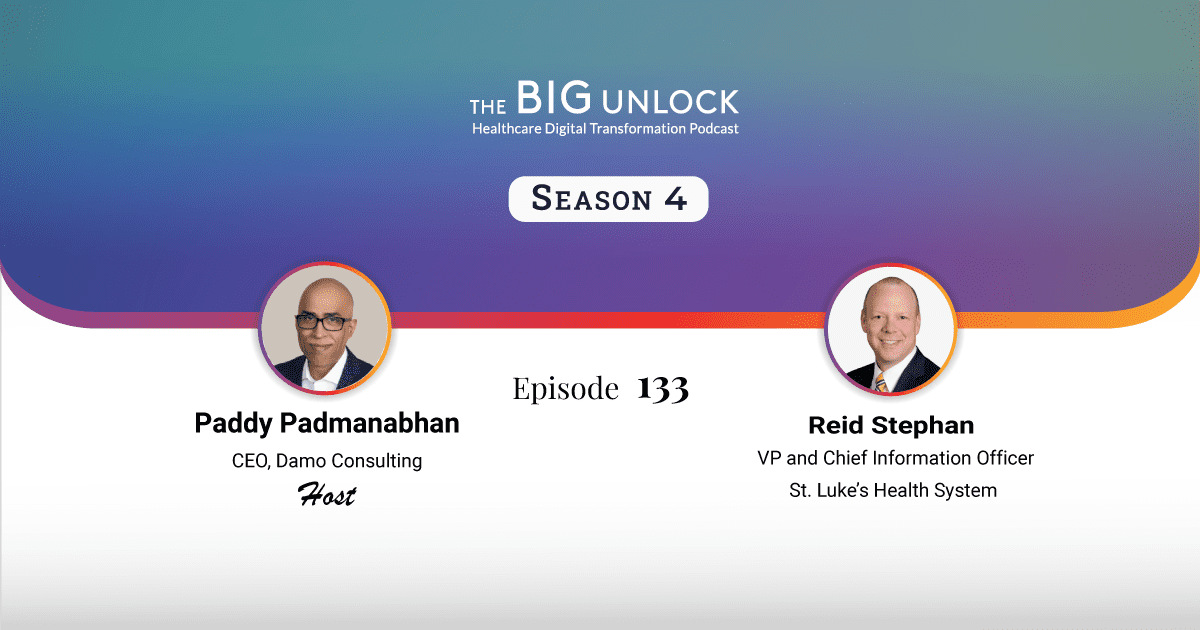

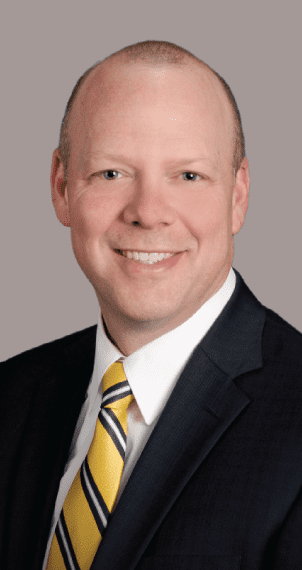

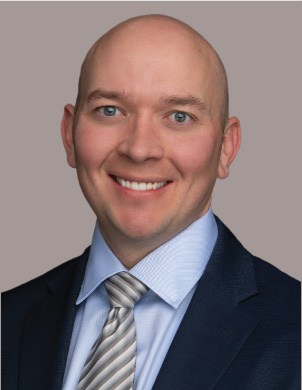
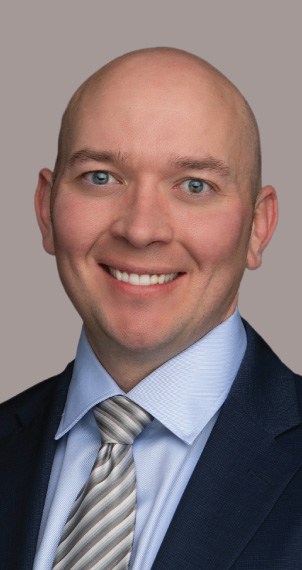


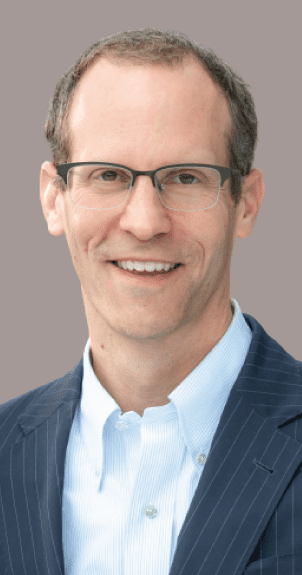
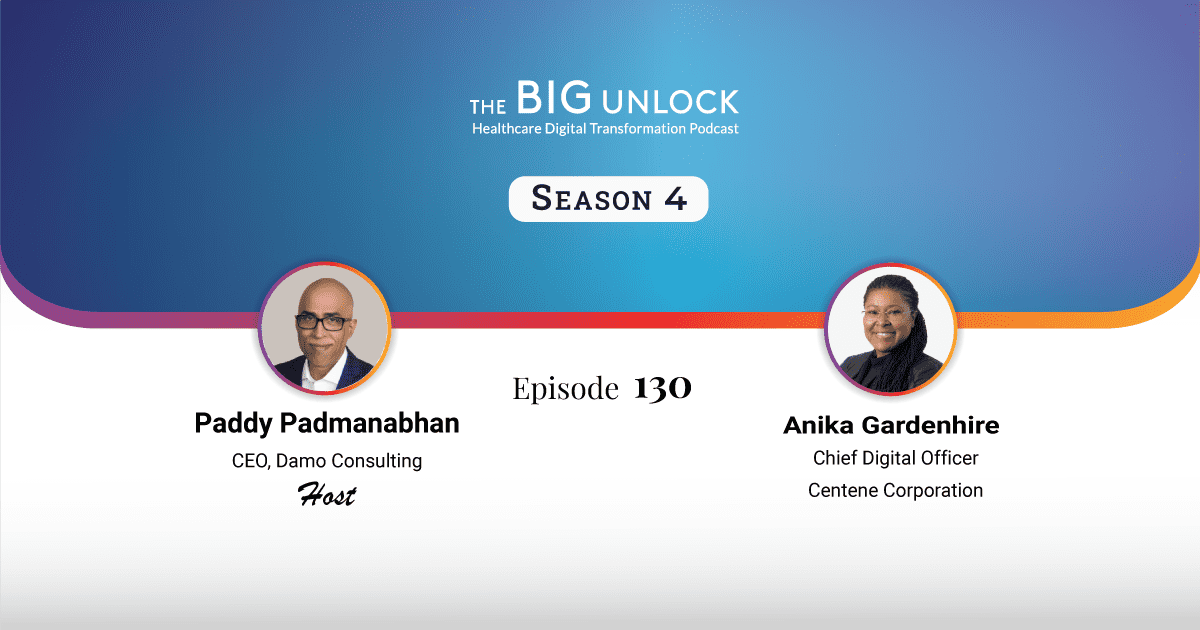
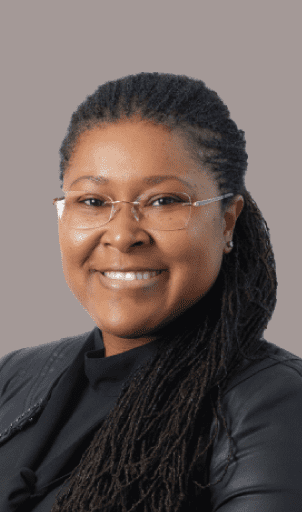
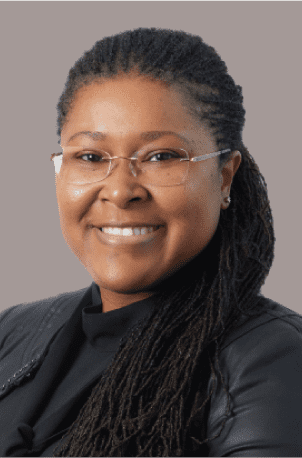
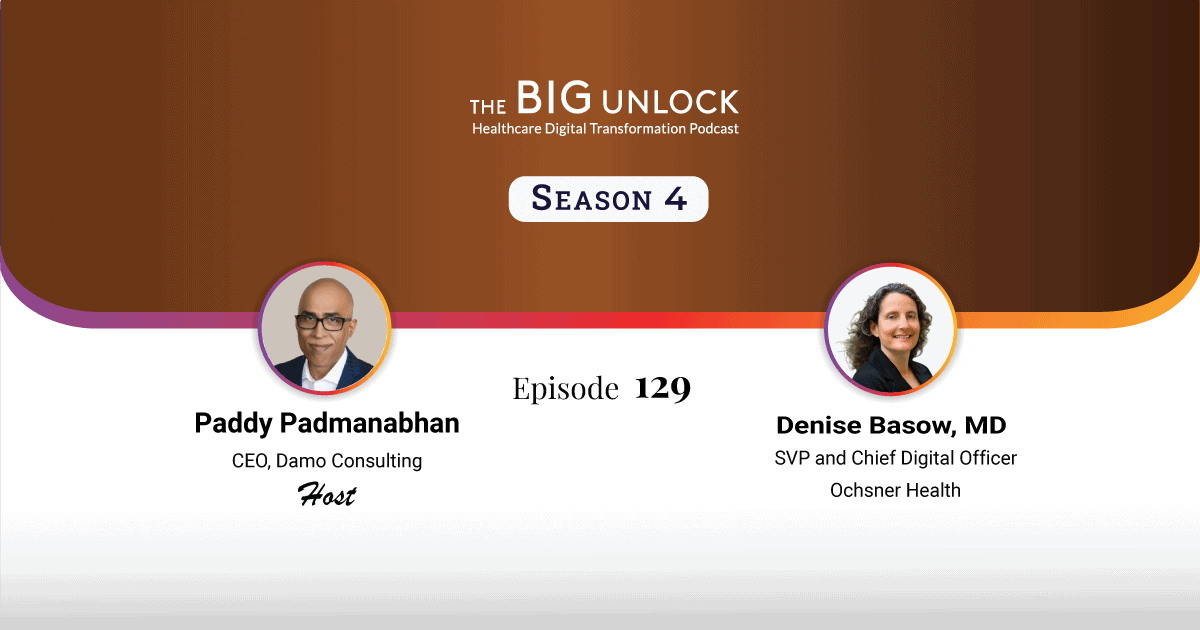
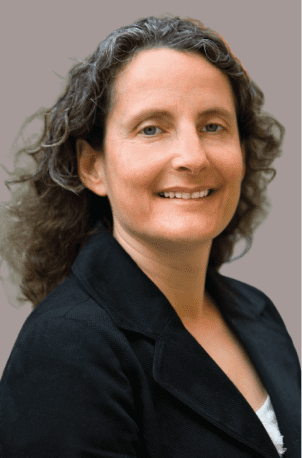


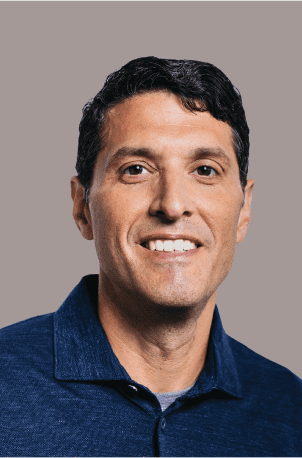
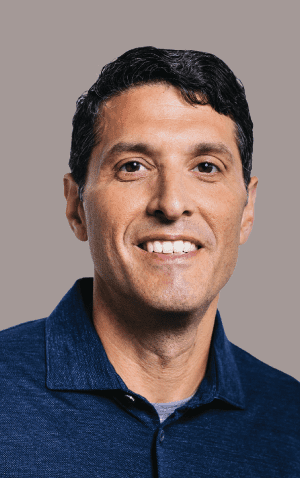
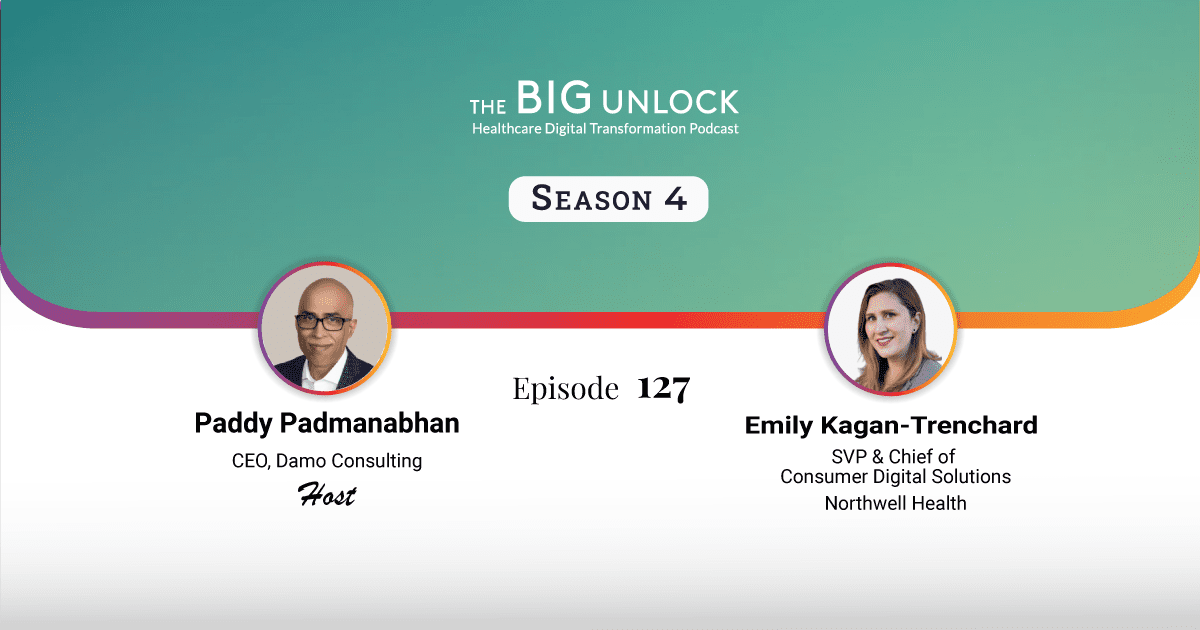
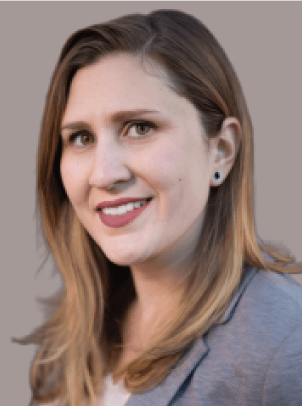
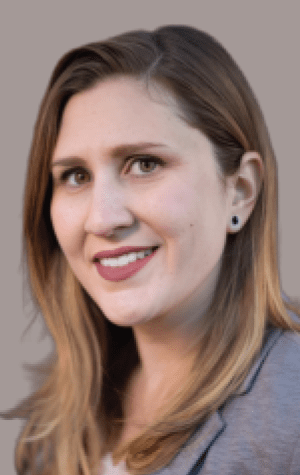
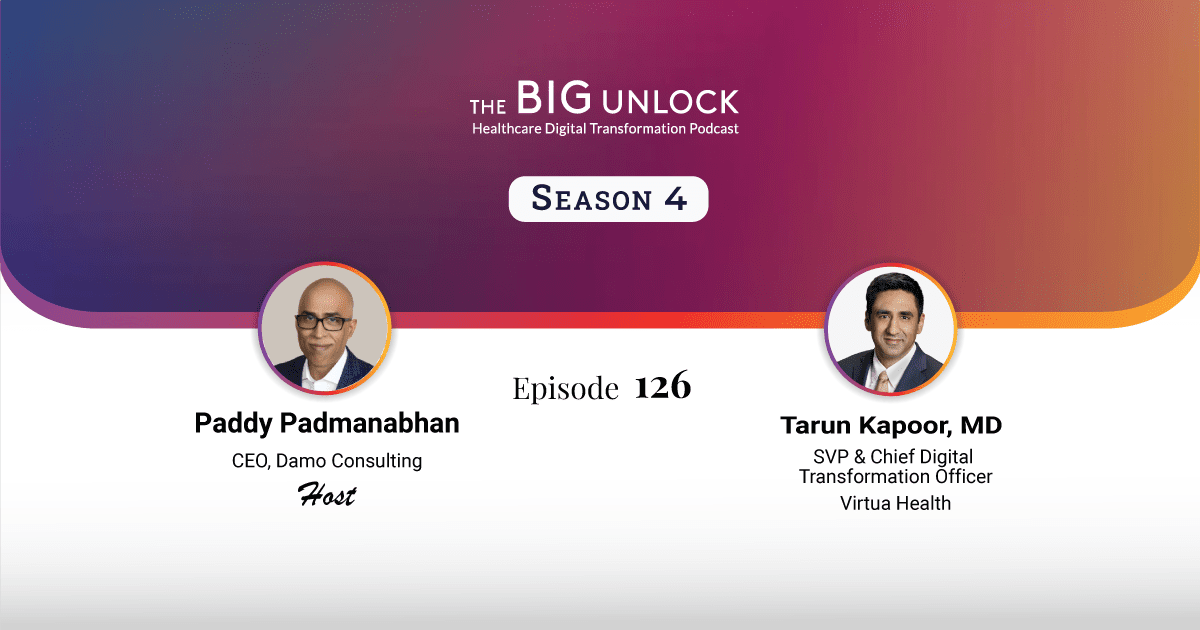
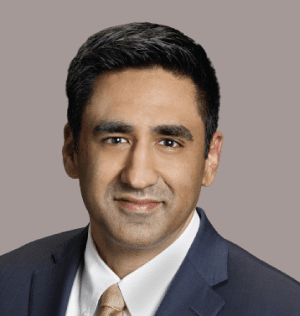

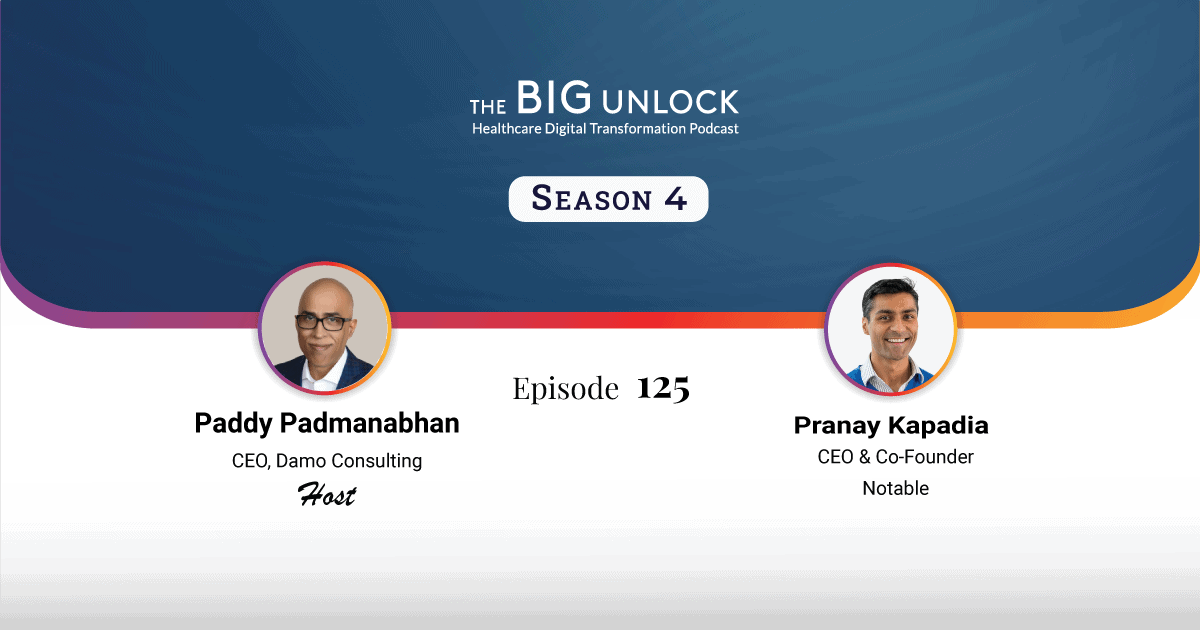
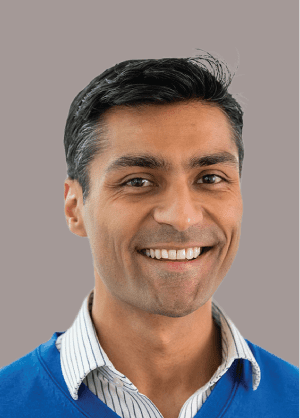
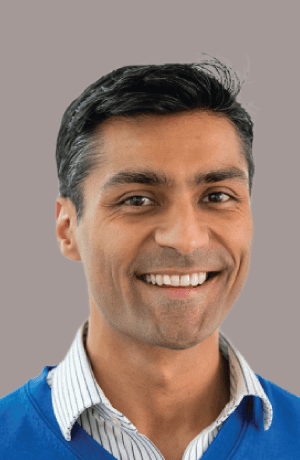



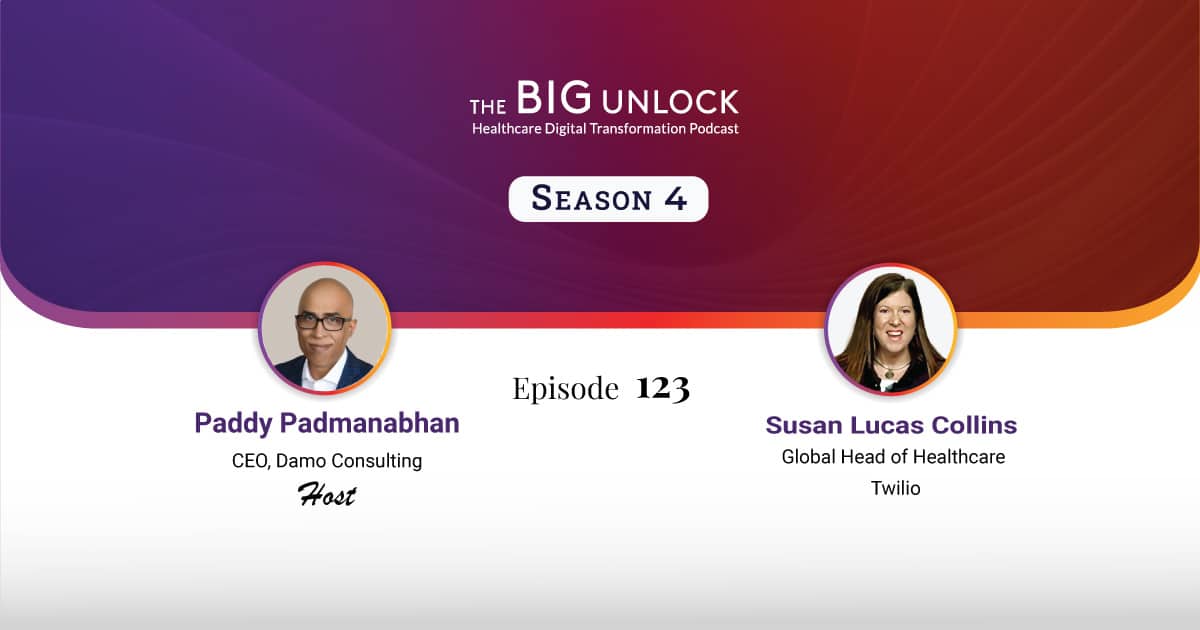
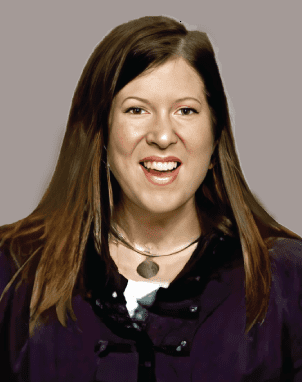
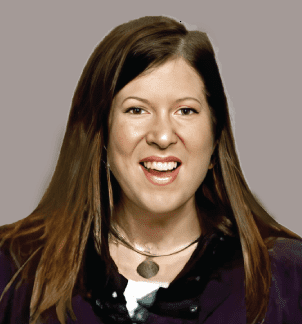
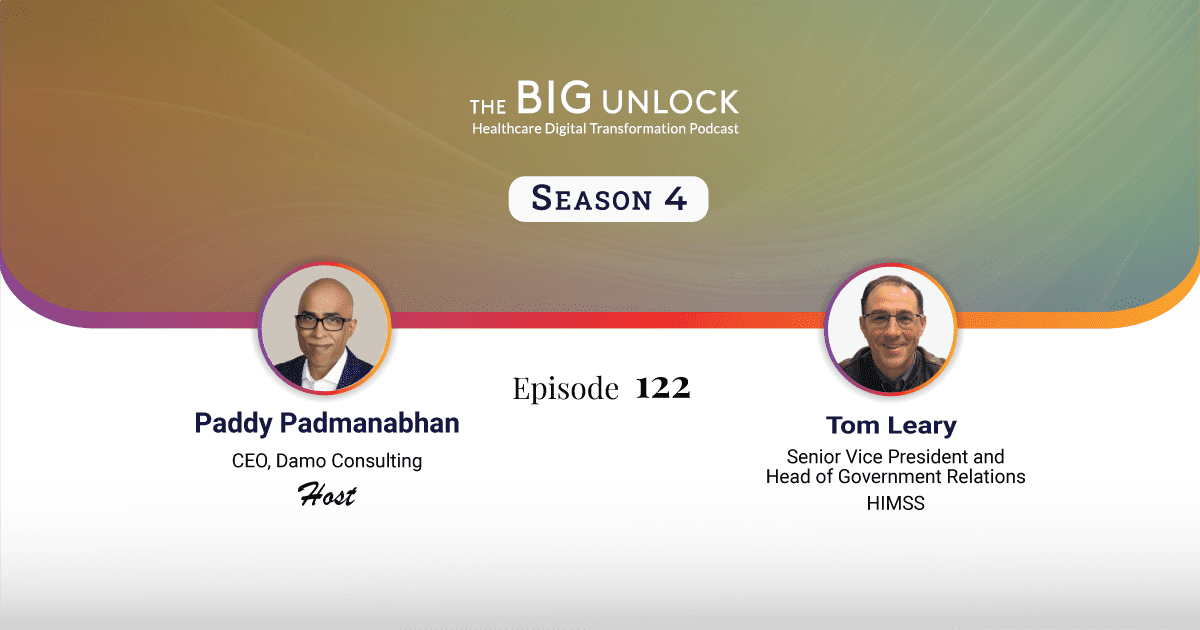
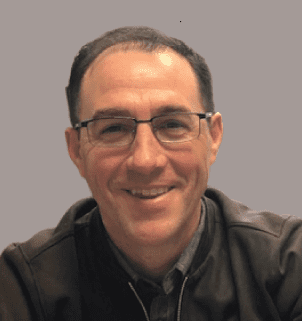

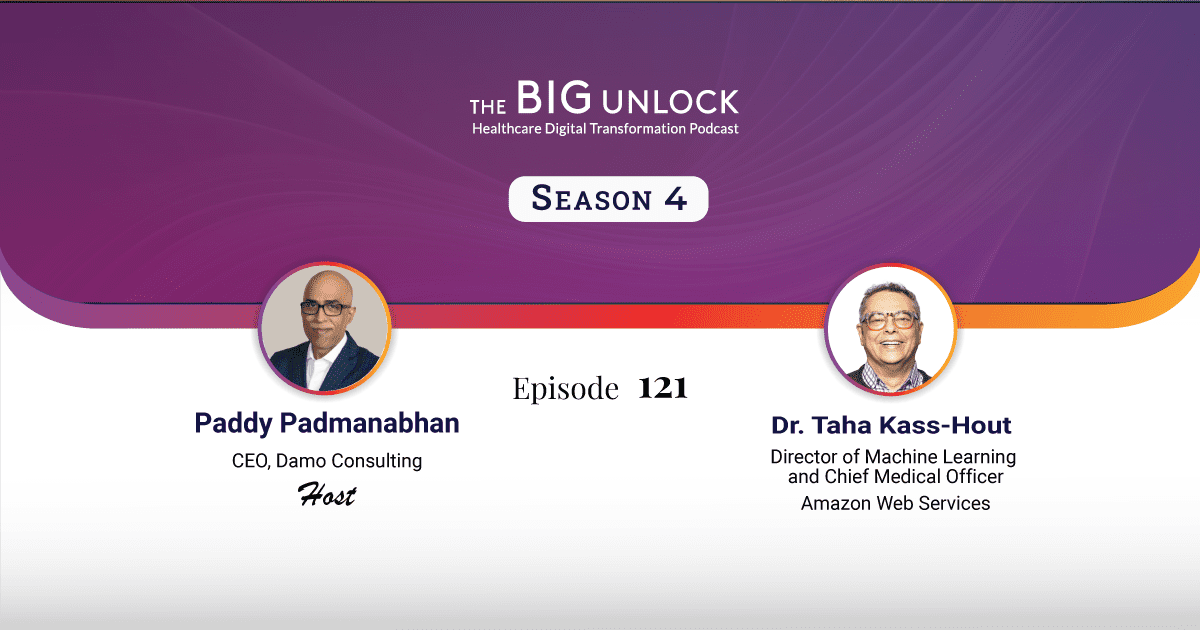

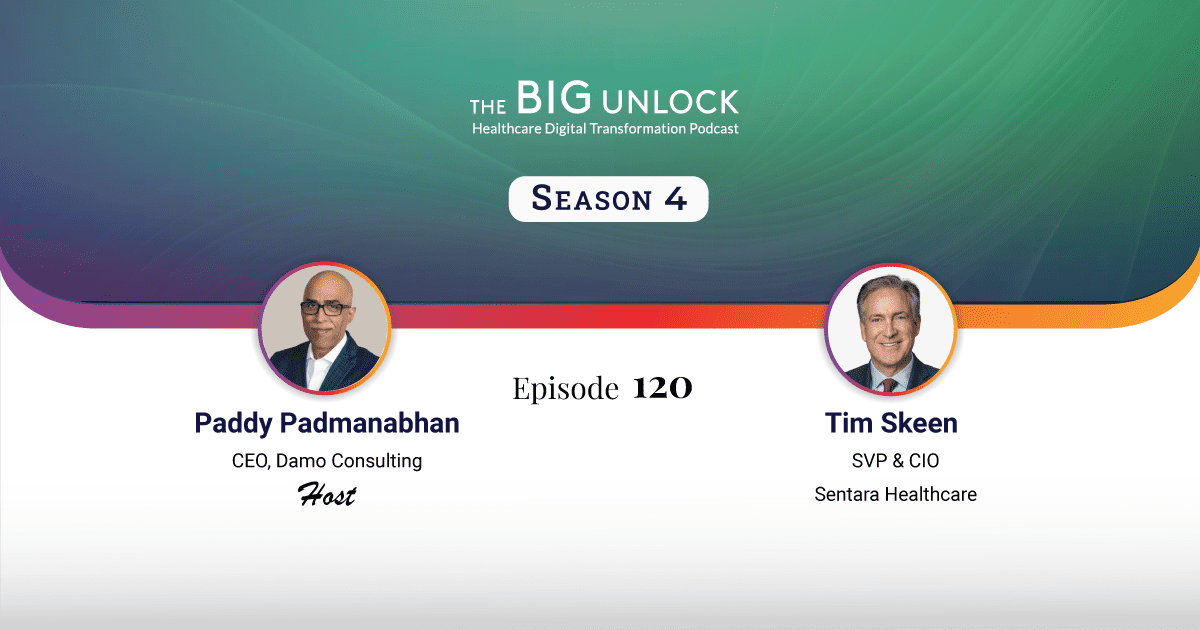
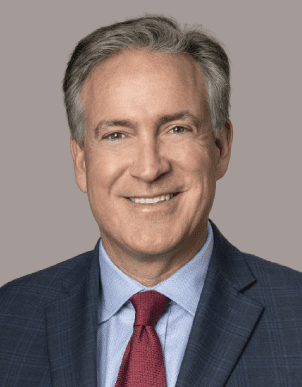
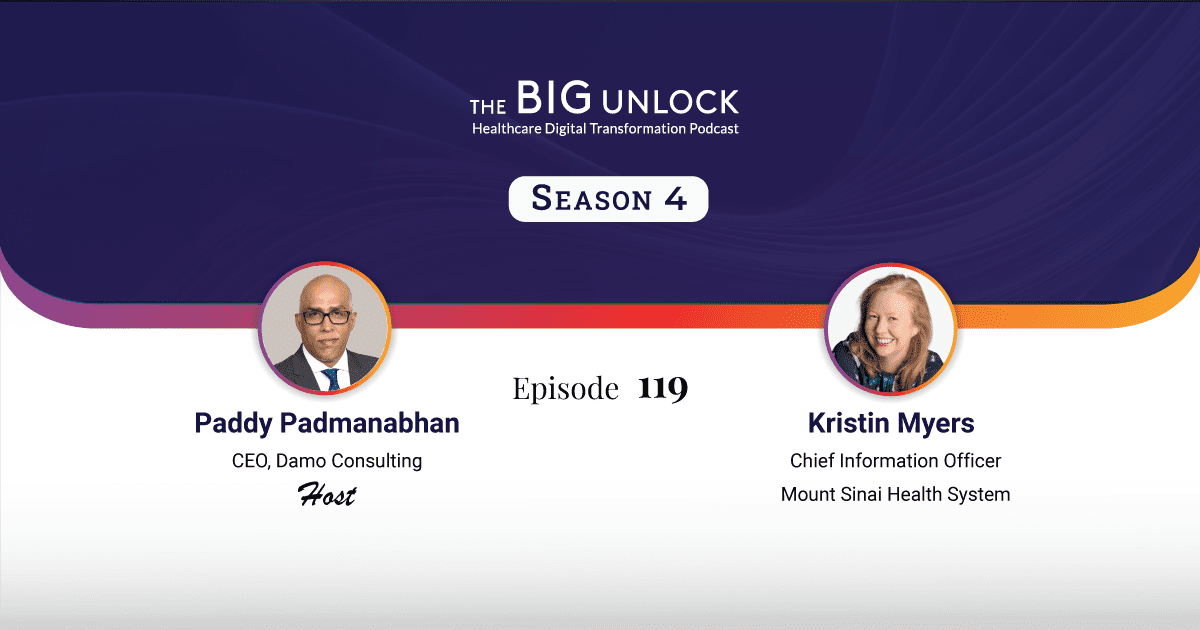
 Hosted by Paddy Padmanabhan
Hosted by Paddy Padmanabhan 